
Cerelixis: precision phytostimulants for resilient agriculture
A new EMBL spin-off leverages new insights into plant biology for more efficient crop protection
SCIENCE & TECHNOLOGY2025
science-technology
Showing results out of

A new EMBL spin-off leverages new insights into plant biology for more efficient crop protection
SCIENCE & TECHNOLOGY2025
science-technology

Yehudi Bloch, ARISE Fellow at EMBL Hamburg, talks about the snow flea antifreeze protein. This is part of a series of stories about EMBL scientists and quirky, charming proteins that make them smile.
PEOPLE & PERSPECTIVES2025
people-perspectives
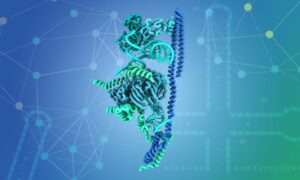
Researchers in the Galej Group at EMBL Grenoble have provided new insights into the structure of the minor spliceosome, an essential RNA-protein complex.
SCIENCE & TECHNOLOGY2025
science-technology

Deepti Gupta, Project Manager and Database Curator at EMBL-EBI, talks about her favourite protein PIEZO1. This is part of a series of stories about EMBL scientists and quirky, charming proteins that make them smile.
PEOPLE & PERSPECTIVES2025
people-perspectivesperspectives

Researchers from Mainz University and EMBL Hamburg have presented a new approach for assessing the form of disordered proteins by using anomalous X-ray scattering method for structural analysis.
SCIENCE & TECHNOLOGY2025
science-technology
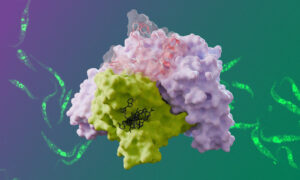
The Kowalinski group at EMBL Grenoble identified significant differences between the trypanosomal and human nuclear cap-binding complex, a key player in cellular RNA metabolism and a potential target for novel anti-parasitic drugs.
SCIENCE & TECHNOLOGY2025
science-technology
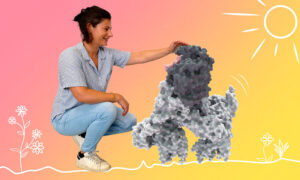
Sarah Gharbi, technician at EMBL Grenoble, talks about her favourite protein complex, which looks like a poodle. This is part of a series of stories about EMBL scientists and quirky, charming proteins that make them smile.
PEOPLE & PERSPECTIVES2025
people-perspectives
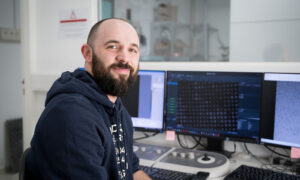
Romain Linares talks about his role in managing the cryo-electron microscopy facility at EMBL Grenoble, how he sees this technique evolving in the coming years, and his passion for astronomy.
PEOPLE & PERSPECTIVES2024
people-perspectives

EMBL Grenoble took part in a series of activities during the French Science Week, highlighting EMBL’s research and the TREC scientific expedition.
LAB MATTERS2024
lab-matters
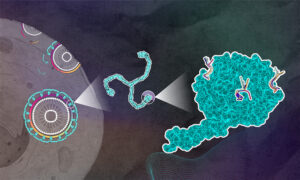
Scientists from EMBL Hamburg and CSSB have revealed key insights into the cellular process of clathrin-mediated endocytosis.
SCIENCE & TECHNOLOGY2024
science-technology
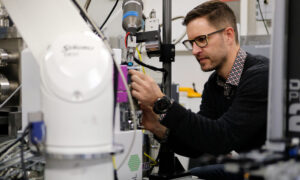
Nicolas Foos, a postdoctoral fellow at EMBL Grenoble, talks about the implementation of a new method for in situ serial crystallography developed during his ARISE fellowship.
SCIENCE & TECHNOLOGY2024
science-technology
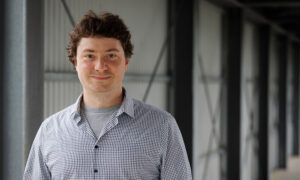
Jan Bláha, postdoc at EMBL Hamburg, talks about the utility of in cellulo protein crystallisation in structural biology research, his sources of inspiration, and the values of collaboration, curiosity, and resilience.
PEOPLE & PERSPECTIVES2024
people-perspectives

In the era of data-driven biology, integrating information from different resources is essential yet often challenging. The BioChemGraph project addresses this challenge by creating infrastructure that consolidates structural, functional, and biochemical annotations for small molecules and their…
2024
updates-from-data-resources
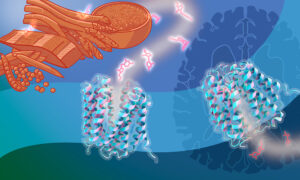
EMBL Hamburg scientists have gained molecular insights into how we absorb vitamin B1 – a mechanism with implications for disease and drug development.
SCIENCE & TECHNOLOGY2024
science-technology
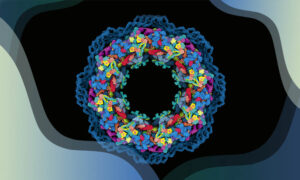
The function of biological molecules is intimately linked to their structure. In the 50 years since EMBL was established, its researchers and engineers have constantly provided leadership in structural biology research and services, resulting in many scientific breakthroughs and novel insights.
SCIENCE & TECHNOLOGY2024
science-technology
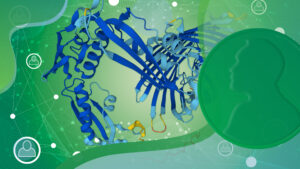
Creators of AI system AlphaFold receive 2024 Nobel Prize for Chemistry.
SCIENCE & TECHNOLOGY2024
sciencescience-technology
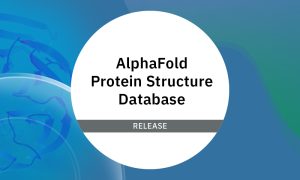
Traditional sequence search methods are fast and efficient but rely solely on comparing amino acid sequences. This approach can miss crucial insights because proteins with similar functions can have vastly different sequences. Although their sequences have diverged, these proteins often retain 3D…
2024
updates-from-data-resources
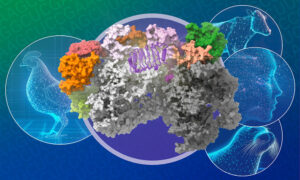
A new publication from the Cusack group sheds light on how a key avian influenza virus enzyme can mutate to allow the virus to replicate in mammals.
SCIENCE & TECHNOLOGY2024
science-technology
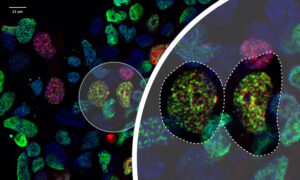
EMBL Grenoble researchers have come up with a new way to identify the targets of a crucial protein-modifying enzyme involved in diverse cellular processes.
SCIENCE & TECHNOLOGY2024
science-technology

A major public engagement event at EMBL Hamburg attracted thousands. A video captures the spirit of the day from participants.
LAB MATTERS2024
lab-matters
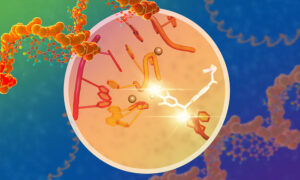
A new research paper published in Nature Communications lays the groundwork for the development of new drugs specific to genetic mutations or alterations responsible for the onset of tumours or genetic diseases.
SCIENCE & TECHNOLOGY2024
science-technology
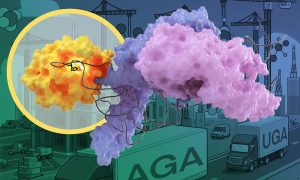
EMBL Grenoble’s Kowalinski Group analysed the structure of an enzyme responsible for modifying tRNA molecules to fine-tune protein production. They discovered that to distinguish almost identical, yet different, tRNA molecules, the enzyme uses help from another enzyme – a type of cooperation…
SCIENCE & TECHNOLOGY2024
science-technology
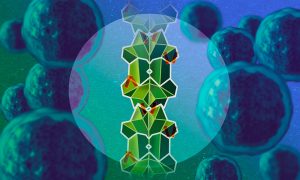
EMBL Hamburg scientists and collaborators discovered a new molecular mechanism in which an unstructured protein disables one of the main cancer-promoting proteins by gluing them into an elongated stack. Data from human patient samples support the role of this mechanism in prostate cancer…
SCIENCE & TECHNOLOGY2024
science-technology
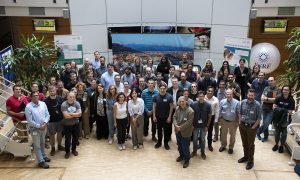
EMBL Grenoble and the ESRF hosted a workshop bringing together representatives from research and industry to discuss the ever-growing role of artificial intelligence in the field of structural biology.
CONNECTIONS2024
connections
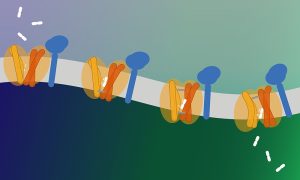
The group of Christian Löw at EMBL Hamburg and CSSB, and collaborators from the Christian-Albrechts-University Kiel and CNRS & Université Paris Cité worked together to reveal the structure and function of a previously unknown lysosome transporter, MFSD1.
SCIENCE & TECHNOLOGY2024
science-technology
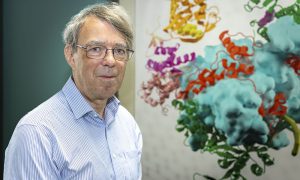
Stephen Cusack, world-renowned structural biologist and former Head of EMBL Grenoble, reflects on his early influences, his achievements, and the lessons he’s learned as he embarks on his next adventure
PEOPLE & PERSPECTIVES2024
people-perspectives
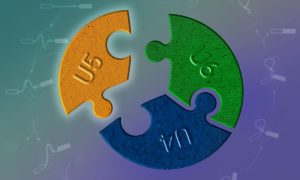
New study from the Galej group provides deeper structural insight into the assembly of a critical molecular machine, that removes non-coding information from genes during their expression.
SCIENCE & TECHNOLOGY2024
science-technology
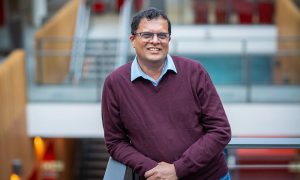
Team Leader Sameer Velankar on why accessible training is key for AlphaFold and AI tools more generally.
PEOPLE & PERSPECTIVES2024
people-perspectivesperspectivesscience
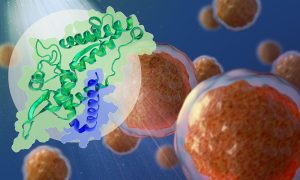
A new study from the Bhogaraju Group at EMBL Grenoble reveals how the cancer-promoting MAGE family of proteins bind to their targets, aiding the development of anti-cancer drugs that target these proteins.
SCIENCE & TECHNOLOGY2024
sciencescience-technology

Simone Heber talks about studying RNA transport, organising the Bike Club at EMBL, and participating in the Ironman World Championship.
LAB MATTERSPEOPLE & PERSPECTIVES2024
lab-matterspeople-perspectives
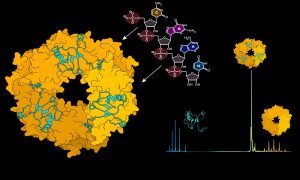
The Kosinski Group at EMBL Hamburg collaborated with other groups in Hamburg to reveal critical steps in Lassa virus ribonucleoparticle assembly and recruitment, and the crucial role played by RNA in in the Lassa virus life cycle.
SCIENCE & TECHNOLOGY2023
sciencescience-technology
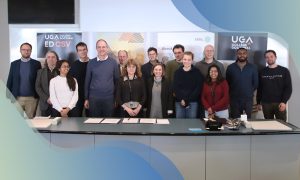
The two institutions celebrated the renewal of the partnership agreement initiated in 1999 for the delivery of a doctoral degree and a joint training certificate during UGA’s Welcome Day for doctoral students.
CONNECTIONSLAB MATTERS2023
connectionslab-matters
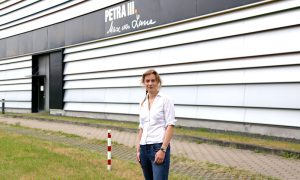
EMBL Hamburg is located at the PETRA III synchrotron, which in the future, will be upgraded to PETRA IV. Selina Storm is theEMBL@PETRA IV Programme Manager. Here, she speaks about her role and the benefits of PETRA IV for EMBL.
LAB MATTERSPEOPLE & PERSPECTIVES2023
lab-matterspeople-perspectives
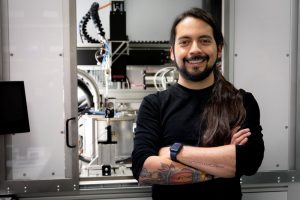
Victor Armijo, a mechatronics engineer at EMBL Grenoble, talks about his dream job, highlighted in EMBL’s exhibition ‘The World of Molecular Biology’.
LAB MATTERSPEOPLE & PERSPECTIVES2023
lab-matterspeople-perspectives
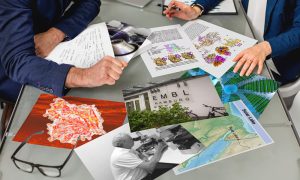
An interdisciplinary collaboration between Hamburg scientists has yielded new insights into the structure and function of a heat-resistant enzyme from an exotic microbe. In this interview, EMBL Hamburg’s Matthias Wilmanns and TUHH’s Garo Antranikian discuss how their collaboration developed and…
SCIENCE & TECHNOLOGY2023
sciencescience-technology

Where to start when thinking about the sustainability of informatics projects
2023
perspectives

Promiscuity is critical for nourishment. How? This question lies at the focus of research by the Löw Group at EMBL Hamburg. Using structural biology methods, they explore how specialised molecules located in the cell membrane allow cells absorb nutrients from their environment.
EMBLetc2023
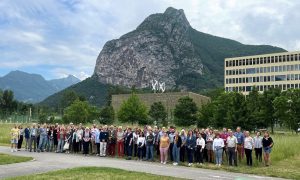
On this date (15 November), 21 years ago, the EMBL, ESRF, ILL, and IBS directors signed a memorandum of understanding to create the Partnership for Structural Biology (PSB) on the European Photon and Neutron (EPN) science campus in Grenoble.
CONNECTIONSLAB MATTERS2023
connectionslab-matters
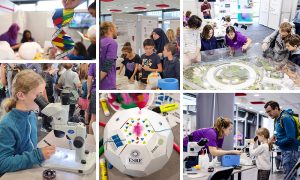
EMBL Grenoble was once again present for the science outreach event ‘Parvis des Sciences’ on Saturday 14 October 2023.
CONNECTIONSLAB MATTERS2023
connectionslab-matters
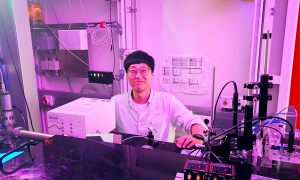
In this interview, Sihyun Sung, Postdoctoral Fellow at EMBL Hamburg, talks about making molecular movies with time-resolved serial X-ray crystallography, his sources of inspiration, and the value of forging deeper connections with friends and colleagues.
LAB MATTERSPEOPLE & PERSPECTIVES2023
lab-matterspeople-perspectives
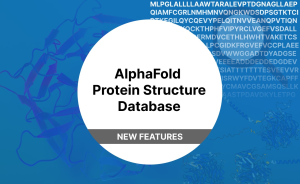
In response to user community demands, the AlphaFold Protein Structure database has introduced sequence-based search and cluster members.
2023
updates-from-data-resources

Jan Kosinski, Julia Mahamid, and Georg Zeller have received grants to enable ambitious projects aimed at mapping the cellular protein synthesis machinery in context and understanding complex host-microbiome interactions, respectively.
EMBL ANNOUNCEMENTS2023
embl-announcementsscience
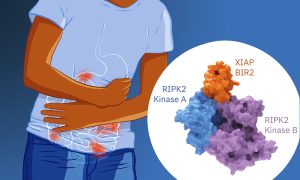
Researchers from the Cusack group at EMBL Grenoble provide structural insights on the XIAP/RIPK2 complex, a promising drug target to fight inflammatory bowel diseases.
SCIENCE & TECHNOLOGY2023
sciencescience-technology
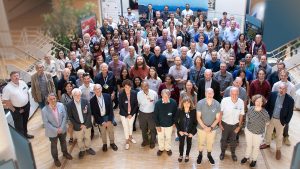
Researchers from across the globe have gathered in Grenoble to celebrate the remarkable lifelong scientific achievements of Stephen Cusack, the former head of EMBL Grenoble.
PEOPLE & PERSPECTIVES2023
eventspeople-perspectives
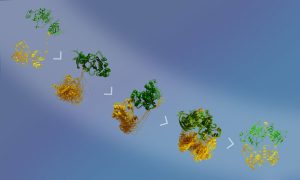
EMBL Grenoble and University of Geneva researchers shed light on the molecular activation of the MAP kinase p38α, the final ‘switch’ triggering the inflammatory response.
SCIENCE & TECHNOLOGY2023
sciencescience-technology
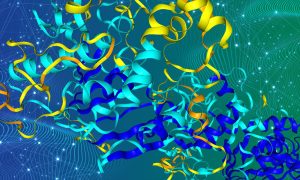
Researchers use the AlphaFold database and Foldseek Cluster algorithm to analyse millions of predicted protein structures and offer new insights into protein evolution.
SCIENCE & TECHNOLOGY2023
research-highlightssciencescience-technology
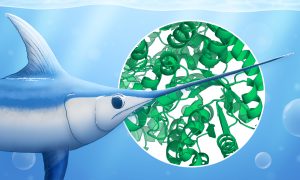
Learn how scientists use bio-SAXS, an experimental X-ray technique, to study the shape and dynamics of proteins and other biomolecules. SAXS can be even used to analyse the structure of mineral particles in the swordfish sword bone, which can help scientists better understand bone ageing.
SCIENCE & TECHNOLOGY2023
sciencescience-technology
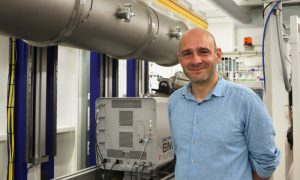
Clément Blanchet has been appointed to lead the team working on small-angle X-ray scattering (SAXS) at EMBL Hamburg. In this interview, he talks his ambitions for the future work of the SAXS Team, his passion for science, and a memorable ‘aha’ moment he had in his early career.
LAB MATTERSPEOPLE & PERSPECTIVES2023
lab-matterspeople-perspectives
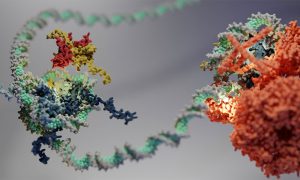
Research from the Eustermann group at EMBL Heidelberg reveals how the packaging of DNA into hexasomes impacts the function of enzymes involved in gene regulation.
SCIENCE & TECHNOLOGY2023
sciencescience-technology

Rutuja Yelmar, predoctoral Fellow at EMBL Grenoble in the Kowalinski group, talks about her passion for research, daily inspiration, and the importance of collaboration in achieving her goals.
LAB MATTERSPEOPLE & PERSPECTIVES2023
lab-matterspeople-perspectives
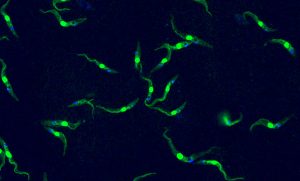
This single-celled organism the size of a dust particle is capable of causing deadly tropical diseases in both humans and livestock –Trypanosoma brucei, in an image by Luciano Dolce from EMBL.
LAB MATTERSSCIENCE & TECHNOLOGY2023
lab-matterspicture-of-the-weekscience-technology
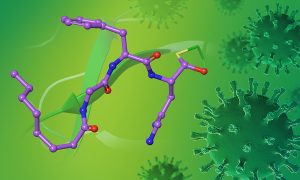
A collaboration between EMBL Grenoble and EBRIS scientists led to the characterisation of a new compound with promising activity against SARS-CoV-2 variants.
SCIENCE & TECHNOLOGY2023
sciencescience-technology
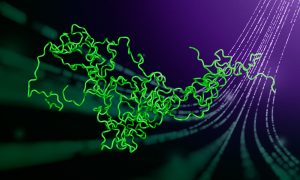
A third of all known proteins are either completely or partially unstructured. EMBL scientists contributed to a new set of guidelines – Minimum Information About a Disorder Experiment (MIADE) – that will help researchers share data on unstructured proteins in a more useful way and will enable…
SCIENCE & TECHNOLOGY2023
sciencescience-technology

In recognition of Janet Thornton’s retirement, we look back at some of her biggest accomplishments shaping the field of bioinformatics.
LAB MATTERSPEOPLE & PERSPECTIVES2023
announcementslab-matterspeople-perspectives
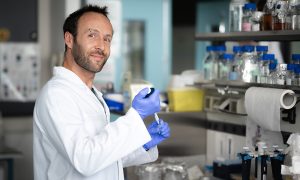
Martin Pelosse, Scientific Expert at EMBL Grenoble Eukaryotic Expression Facility, explains the platform’s role in supporting the site’s cutting-edge research activities and its future applications.
LAB MATTERSPEOPLE & PERSPECTIVES2023
lab-matterspeople-perspectives
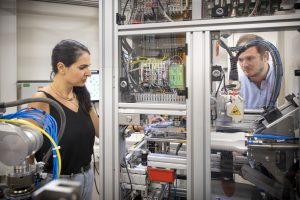
EMBL Grenoble technology teams provide a sneak peek into their latest collaborative project in structural biology services: the complete automation of an integral step in X-ray crystallography.
EMBLetc2023

EMBL Hamburg scientists have contributed to the development of the Spitrobot, a ground-breaking experimental setup that will simplify creating molecular movies. The Spitrobot automates the sample preparation for time-resolved crystallography, which is used to create 3D snapshots of protein…
SCIENCE & TECHNOLOGY2023
sciencescience-technology
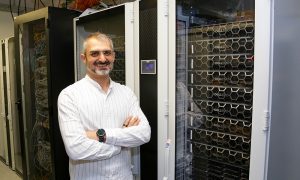
Eduard Avetisyan leads the EMBL Hamburg IT team. He joined EMBL after transitioning from particle physics research to IT. Besides providing standard IT user support, his team also enables smooth processing and computational analysis of structural biology data. Here, he talks about the joys and…
LAB MATTERSPEOPLE & PERSPECTIVES2023
lab-matterspeople-perspectives
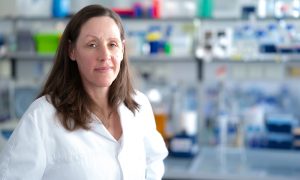
Audrey Spielmann, Lab Support Manager, talks about her role in supporting the research done at EMBL Grenoble.
LAB MATTERSPEOPLE & PERSPECTIVES2023
lab-matterspeople-perspectives

Together with his team, Gergely Papp pushes the frontiers of technology development in the field of structural biology.
LAB MATTERSPEOPLE & PERSPECTIVES2023
lab-matterspeople-perspectives
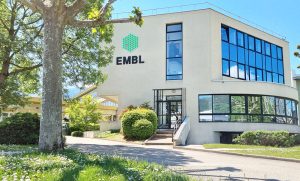
EMBL’s French site was highlighted in a short film presenting its expertise in structural biology research and services.
CONNECTIONSLAB MATTERS2023
connectionslab-matters
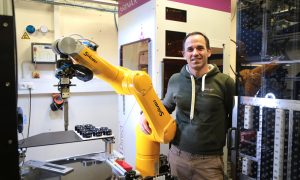
Physicists, engineers and robotics experts work together in EMBL Hamburg’s Instrumentation Team to design instruments that support structural biology research. The team has finished a transfer robot that facilitates automated handling of protein crystals with care and precision. This will help…
LAB MATTERSSCIENCE & TECHNOLOGY2023
lab-mattersscience-technology
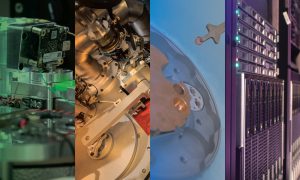
EMBL is one of the partners of this project that aims to accelerate drug discovery and development, bringing in expertise from EMBL Grenoble and EMBL-EBI.
LAB MATTERSSCIENCE & TECHNOLOGY2023
lab-mattersscience-technology
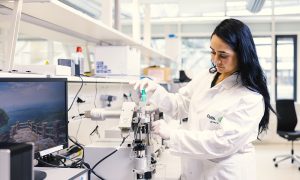
EMBL Hamburg’s Sample Preparation and Characterisation (SPC) Facility offers scientists access to almost all available biophysics technologies. The facility’s staff provides advice and support with experiments and data analysis. The facility is conveniently located just next to the EMBL…
LAB MATTERSSCIENCE & TECHNOLOGY2023
lab-mattersscience-technology
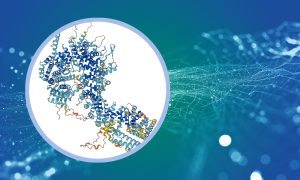
Open data played a pivotal role in the development of the AlphaFold AI. The same open principles now apply to AlphaFold predictions.
2023
perspectivesscience
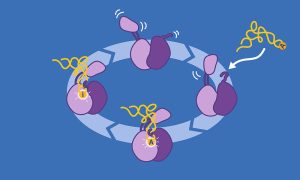
EMBL Grenoble scientists provide new insights into the function of an essential RNA editing enzyme.
SCIENCE & TECHNOLOGY2023
sciencescience-technology
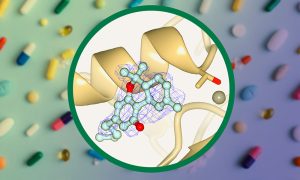
EMBL Grenoble researchers have investigated the interaction between THC and some proteins it might bind to. In a recent study, they showed in vitro that THC inhibits an important human enzyme called autotaxin.
SCIENCE & TECHNOLOGY2023
sciencescience-technology
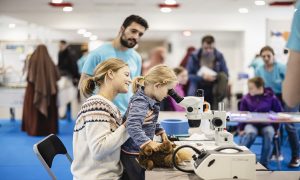
In October 2022, EMBL Grenoble participated in the annual science outreach event Parvis des Sciences, organised by the GIANT campus under the umbrella of the French science week – La Fête de la science.
CONNECTIONSLAB MATTERS2022
connectionslab-matters
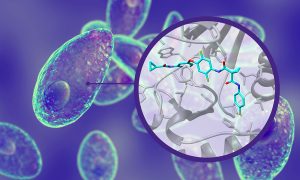
Recent studies supported by EMBL Grenoble’s expertise in structural biology research and scientific services have identified Altiratinib as a potential drug to stop toxoplasmosis infection and opened up treatment options against malaria.
SCIENCE & TECHNOLOGY2022
sciencescience-technology
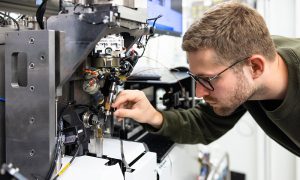
Kirill Kovalev, an EMBL Hamburg researcher, is studying the structure of an ancient bacterial molecule to help scientists control brain cell activity
EMBLetc2022
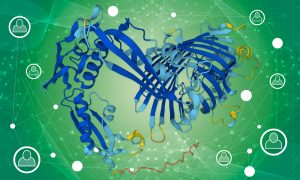
Researchers use social media to share findings on how useful AlphaFold predictions are for different applications.
2022
research-highlightsscience
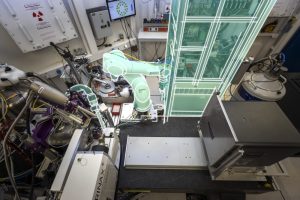
Researchers and engineers have integrated a CrystalDirect harvester into the fully automated beamline MASSIF-1, a unique combination of structural biology technologies that is now open to external academic users.
LAB MATTERSSCIENCE & TECHNOLOGY2022
lab-mattersscience-technology
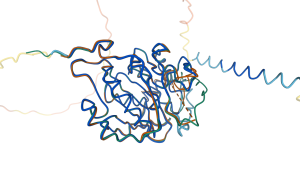
You can now superpose AlphaFold models onto PDB structures at the touch of a button using the PDBe-KB aggregated views of proteins.
2022
updates-from-data-resources
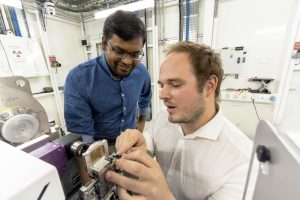
The recent construction of the new ID29 beamline in Grenoble is pioneering a new way of doing experiments in time-resolved crystallography and opening up technology transfer possibilities
LAB MATTERSSCIENCE & TECHNOLOGY2022
lab-mattersscience-technology
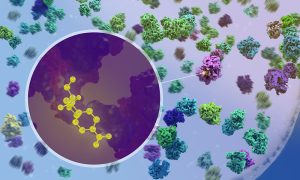
New research by EMBL scientists shows at atomic detail how antibiotics affect the process of protein production inside bacteria.
SCIENCE & TECHNOLOGY2022
sciencescience-technology
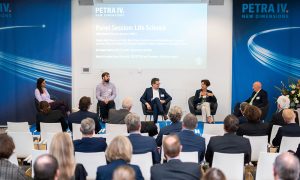
EMBL joined a kick-off event focusing on the developments related to the upgrade of the PETRA III synchrotron storage ring to PETRA IV at the DESY campus, where EMBL Hamburg is located. PETRA IV could open new possibilities at EMBL Hamburg, contributing to the goals of the EMBL Programme…
LAB MATTERSSCIENCE & TECHNOLOGY2022
lab-mattersscience-technology
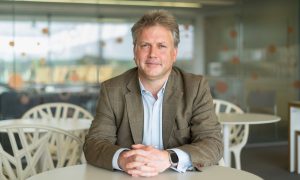
Ewan Birney, Deputy Director General of EMBL and Director of EMBL-EBI, reveals the key factors that enabled AlphaFold to change the world of biology.
PEOPLE & PERSPECTIVES2022
people-perspectivesperspectivesscience
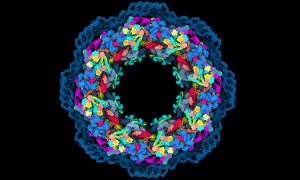
Scientists have solved several mysteries around the structure and function of a true molecular giant: the human nuclear pore complex. They created the most complete model of the complex thanks to combining the program AlphaFold2 with cryo-electron tomography, integrative modelling, molecular…
SCIENCE & TECHNOLOGY2022
sciencescience-technology
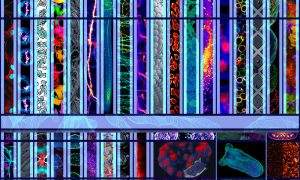
EMBL’s first Imaging Centre Symposium will occur onsite at EMBL and include tours of the new Imaging Centre on 31 May, introducing participants to the facility and its staff and featuring talks on the rapid developments in imaging technologies that have led to notable biological and medical…
EMBL ANNOUNCEMENTS2022
embl-announcementsevents

Professor Kristina Djinović-Carugo has been appointed as the next head of EMBL Grenoble. She will join EMBL in July from the Max Perutz Laboratories at the University of Vienna, where she is currently Head of the Department of Structural and Computational Biology and full Professor of Structural…
EMBL ANNOUNCEMENTSLAB MATTERS2022
embl-announcementslab-matters
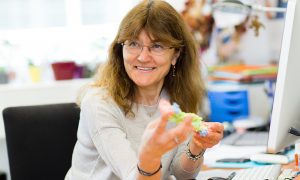
Slovenian structural biologist Kristina Djinović-Carugo will join EMBL in July as the new Head of EMBL Grenoble. We spoke to her about her background, research interests, and plans for EMBL Grenoble.
LAB MATTERSPEOPLE & PERSPECTIVES2022
lab-matterspeople-perspectives
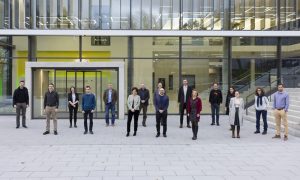
DeepMind visits EMBL Heidelberg to discuss current and future implications of Artificial Intelligence for life science research.
SCIENCE & TECHNOLOGY2022
sciencescience-technology

EMBL Hamburg’s Grzegorz Chojnowski from the Wilmanns Group developed software called findMySequence, which identifies proteins’ amino-acid sequences based on electron cryo-microscopy and X-ray crystallography data. It’s useful for identifying unknown proteins in samples from natural sources.
SCIENCE & TECHNOLOGY2022
sciencescience-technology
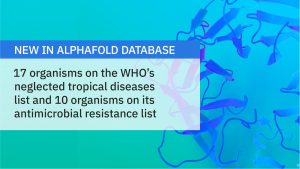
Latest AlphaFold database update adds 27 new organisms and almost 200,000 new protein structure predictions relevant to neglected tropical diseases and antimicrobial resistance
2022
updates-from-data-resources
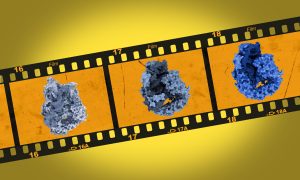
The Galej group at EMBL Grenoble has recently obtained high resolution snapshots of a crucial step in RNA splicing involving the U2 snRNP complex, a crucial component of the human spliceosome.
SCIENCE & TECHNOLOGY2022
sciencescience-technology

The memorandum of understanding (MoU) signed between EMBL and the Institute for Advanced Biosciences (IAB) a year ago has already catalysed new grants for joint research projects related to cancer and infection biology, thereby deepening collaborative activities.
CONNECTIONSLAB MATTERS2021
connectionslab-matters
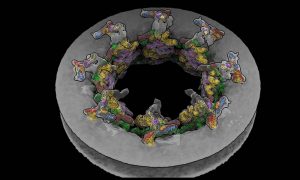
EMBL Hamburg’s Kosinski Group, the Beck Laboratory at the Max Planck Institute of Biophysics, and colleagues at EMBL Heidelberg recorded the nuclear pore complex contracting in living cells. They visualised the movement with an unprecedented level of detail with help of new software called…
SCIENCE & TECHNOLOGY2021
sciencescience-technology
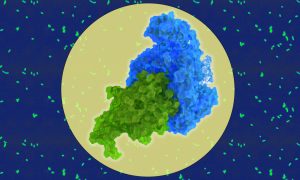
Using cryo-EM and structural biology techniques, EMBL researchers have shown how two proteins of Legionella pneumophila interact. This finding sheds light on a mechanism critical to the infection process and could lead to the development of new drugs to treat pneumonia.
SCIENCE & TECHNOLOGY2021
sciencescience-technology
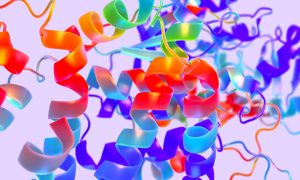
The systematic application of AI in life sciences as in the AlphaFold algorithm for predicting protein structures has been named '2021 Breakthrough of the Year' by Science magazine.
SCIENCE & TECHNOLOGY2021
sciencescience-technology
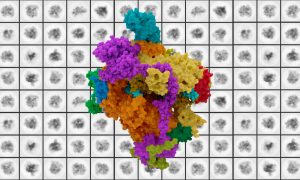
New structural biology research provides fundamental information critical to understanding enzyme mutations connected to rare diseases and cancers.
SCIENCE & TECHNOLOGY2021
sciencescience-technology

RNA vaccines, such as the ones for COVID-19, represent a new approach in vaccine technology. Cy Jeffries, faculty staff scientist at EMBL Hamburg, explains the clever technology behind RNA vaccines, and how structural biology contributes to its development. EMBL Hamburg collaborated on several…
SCIENCE & TECHNOLOGY2021
sciencescience-technology
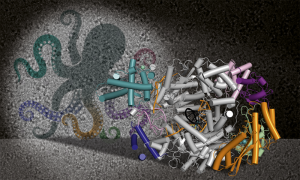
EMBL structural biology is part of an international collaboration addressing zoonotic disease caused by Lassa virus.
SCIENCE & TECHNOLOGY2021
sciencescience-technology

Using gene editing and three types of microscopy, one of EMBL’s newest group leaders is deciphering the functions of one of the smallest molecules involved in cell division, motility, and signalling, known as a centriole.
LAB MATTERSPEOPLE & PERSPECTIVES2021
lab-matterspeople-perspectives
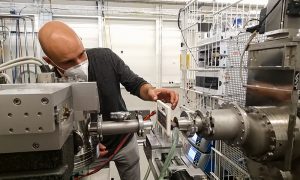
Each year, EMBL Hamburg’s Svergun Group offers practical EMBO courses and lecture courses on biological small-angle X-ray scattering (SAXS). The courses provide young scientists an opportunity to gain hands-on experience by measuring their own samples, and by exploring different aspects of SAXS…
LAB MATTERSSCIENCE & TECHNOLOGY2021
lab-mattersscience-technology

Ken Holmes, outstanding pioneer of structural biology and founder of EMBL´s Hamburg site, died on 2 November 2021 at the age of 87.
PEOPLE & PERSPECTIVES2021
alumnipeople-perspectives
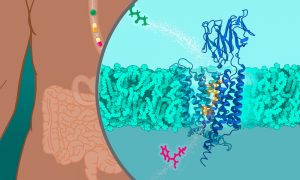
Scientists at EMBL Hamburg determined the molecular structure of Peptide Transporters 1 and 2. The findings will enable developing drugs that more efficiently pass from the gut to target tissues.
SCIENCE & TECHNOLOGY2021
sciencescience-technology
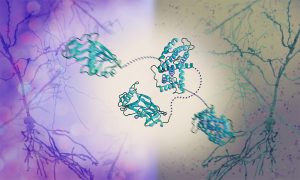
The Graham and Crump groups at the University of Cambridge and the Svergun Group at EMBL Hamburg have discovered a mechanism by which the herpes simplex virus takes control of the molecular machinery of human cells. Their work reveals how a dedicated viral protein hijacks key host proteins, forcing…
SCIENCE & TECHNOLOGY2021
sciencescience-technology
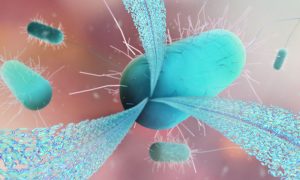
Structural biology provides insights into the diverse functions of fibrous protein in humans, amphibians, and bacteria.
SCIENCE & TECHNOLOGY2021
sciencescience-technology
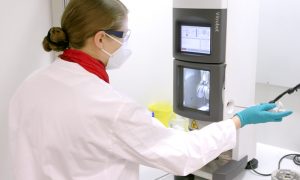
Giulia Zanetti from the Institute of Structural and Molecular Biology (ISMB) in London explains how the collaboration with the Cryo-Electron Microscopy Service Platform enabled her group to reveal the structure of protein transport complexes.
LAB MATTERSSCIENCE & TECHNOLOGY2021
lab-mattersscience-technology
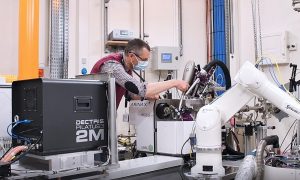
MASSIF-1, run jointly by EMBL Grenoble and the ESRF, is a beamline for macromolecular crystallography. It is used by the research community to study the 3D structure of proteins, which is important for drug development.
LAB MATTERSSCIENCE & TECHNOLOGY2021
lab-mattersscience-technology
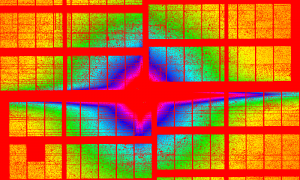
A collaboration led by EMBL Hamburg’s Svergun Group used small-angle X-ray scattering (SAXS) at the European XFEL to obtain data on samples containing coronavirus spike proteins and antibodies that bind them.
SCIENCE & TECHNOLOGY2021
sciencescience-technology

EMBL alumni Ilaria Piazza and Ken Holmes have been recognised for their outstanding contributions, and will receive their awards as part of the celebrations for EMBL World Alumni Day.
PEOPLE & PERSPECTIVES2021
alumnipeople-perspectives
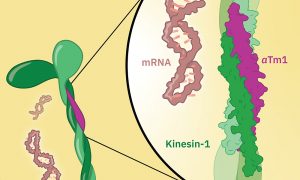
EMBL scientists generate a high-resolution crystal structure of the Kinesin-1/aTm1 transport complex in the fruit fly.
SCIENCE & TECHNOLOGY2021
sciencescience-technology
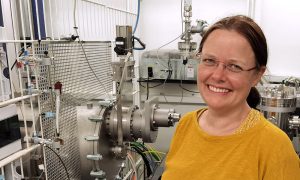
EMBL’s Melissa Graewert and colleagues are taking a structural biologist’s approach to better understanding nanoplastic particles.
SCIENCE & TECHNOLOGY2021
sciencescience-technology
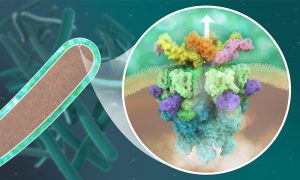
EMBL Hamburg’s Wilmanns and Kosinski groups have determined the detailed structure of a bacterial protein complex critical for tuberculosis infection.
SCIENCE & TECHNOLOGY2021
sciencescience-technology
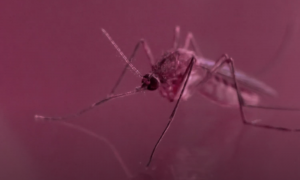
EMBL scientists support research on malaria by providing freely available data resources and using innovative experimental approaches. Our Course and Conference Office facilitates the exchange of knowledge in the field by hosting the annual BioMalPar conference.
SCIENCE & TECHNOLOGY2021
sciencescience-technology
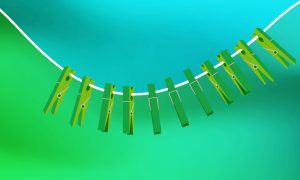
Researchers at EMBL Hamburg reveal how peg-like proteins clasp and reshape the cell membrane
SCIENCE & TECHNOLOGY2021
sciencescience-technology
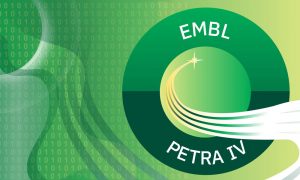
A workshop run by EMBL Hamburg explored opportunities for structural biology at the future, upgraded PETRA IV synchrotron.
SCIENCE & TECHNOLOGY2021
eventsscience-technology
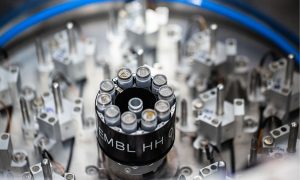
EMBL Hamburg’s integrated structural biology facility has contributed to the success of a large-scale SARS-CoV-2 study
SCIENCE & TECHNOLOGY2021
sciencescience-technology
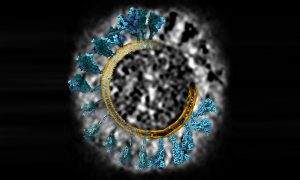
What does coronavirus’s spike protein look like in 3D? EMBL scientists and colleagues used cryo-electron tomography and molecular dynamics simulations to find out.
SCIENCE & TECHNOLOGY2021
picture-of-the-weekscience-technology
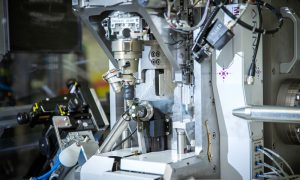
Florent Cipriani, who recently retired as Head of the Instrumentation Team after a long career at EMBL Grenoble, is one of the pioneers of instrumentation development in this field.
LAB MATTERSSCIENCE & TECHNOLOGY2021
lab-mattersscience-technology
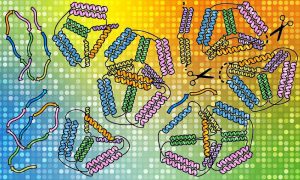
Using EMBL Hamburg’s world-class structural biology infrastructure, researchers advance the folding of protein ‘origami’ designed in the lab.
SCIENCE & TECHNOLOGY2021
sciencescience-technology
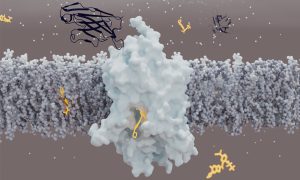
Scientists have determined the structure of Glycine Transporter 1. The finding could open new avenues for developing therapeutics for psychiatric disorders
SCIENCE & TECHNOLOGY2021
sciencescience-technology
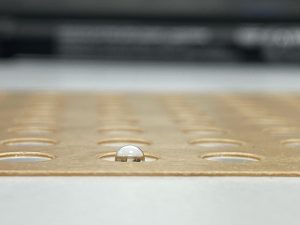
Scientists at EMBL Hamburg use droplets of protein solution to grow protein crystals. By exposing the crystals to X-rays, they are able to determine the protein’s molecular structure.
SCIENCE & TECHNOLOGY2021
picture-of-the-weekscience-technology
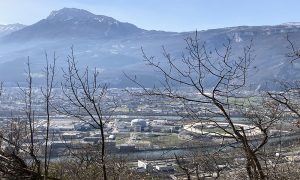
This photo shows the European Photon and Neutron (EPN) science campus where EMBL Grenoble is located. A delightful spring breeze in the air melts the last remaining patches of snow in the mountains.
LAB MATTERS2021
lab-matterspicture-of-the-week

The regular structures of crystals are a source of inspiration and fascination to us humans. While the crystals in this picture were not grown in nature, but instead by Petra Drncova from EMBL Grenoble, they share the same attributes as those found in nature.
SCIENCE & TECHNOLOGY2021
picture-of-the-weekscience-technology
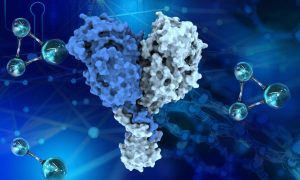
A new paper from the Galej group at EMBL Grenoble describes the structure of key parts of the Integrator complex, involved in gene expression.
SCIENCE & TECHNOLOGY2021
sciencescience-technology
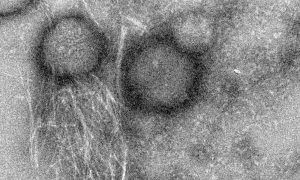
Researchers at the Technion – Israel Institute of Technology and EMBL Hamburg, in collaboration with scientists in Israel and Spain, have discovered remarkable molecular properties of an antimicrobial peptide from the skin of the Australian toadlet. The discovery could inspire the development of…
SCIENCE & TECHNOLOGY2021
sciencescience-technology
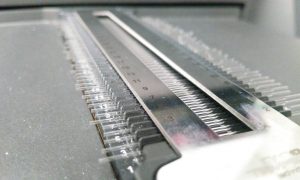
Structural biologists want to study proteins at the atomic level. The device shown in this Picture of the Week is essential for this.
SCIENCE & TECHNOLOGY2021
picture-of-the-weekscience-technology
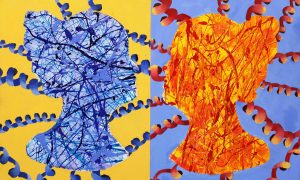
Schoolchildren create exquisite protein-inspired artworks
LAB MATTERS2020
lab-matters

The first snowflakes have fallen on the Vercors Mountains, right behind the EMBL Grenoble building, and an almost full moon is showing up during a sunny morning.
LAB MATTERS2020
lab-matterspicture-of-the-week
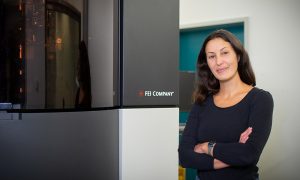
While cryo-electron tomography (cryo-ET) was first envisioned in 1968, the advances the Mahamid group are bringing to this 3D method for studying molecules directly inside cells are new, and are likely to greatly expand its use.
SCIENCE & TECHNOLOGY2020
sciencescience-technology
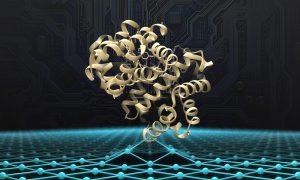
How artificial intelligence can help us solve the mysteries of the protein universe
SCIENCE & TECHNOLOGY2020
sciencescience-technology
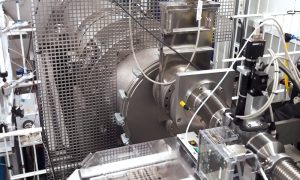
Biotechnology company BioNTech and Johannes Gutenberg University Mainz conduct collaborative research with EMBL scientists at the beamline P12 in Hamburg
SCIENCE & TECHNOLOGY2020
sciencescience-technology
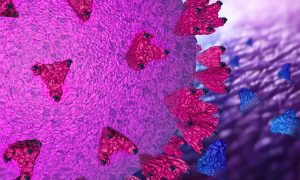
By screening hundreds of sybodies (synthetic mini-antibodies), scientists have identified one that might stop SARS-CoV-2 from infecting human cells. This work, which holds promise for treating COVID-19, was conducted by EMBL Hamburg and collaborators from the Centre for Structural Systems Biology…
SCIENCE & TECHNOLOGY2020
sciencescience-technology
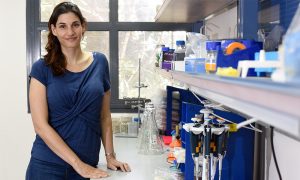
New associate group leader at EMBL Hamburg investigates the structure of functional amyloids in bacteria and in human disease
LAB MATTERSPEOPLE & PERSPECTIVES2020
lab-matterspeople-perspectives
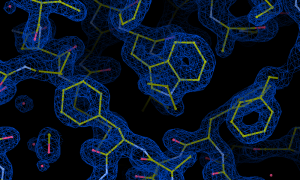
A group of scientists led by EMBL Hamburg’s Christian Löw provide insights into the molecular structure of proteins involved in the gliding movements through which the parasites causing malaria and toxoplasmosis invade human cells.
SCIENCE & TECHNOLOGY2020
sciencescience-technology
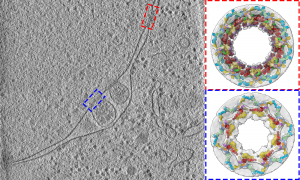
Scientists from the Beck group have studied the 3D structure of nuclear pores in budding yeast. They show how the architecture of the nuclear pore complex differs inside cells compared to its form observed in vitro studies.
SCIENCE & TECHNOLOGY2020
sciencescience-technology
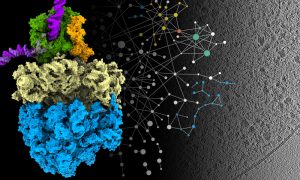
A new approach that allows researchers to see molecular machinery at work inside cells has offered a deeper understanding of how bacteria produce proteins and a unique glimpse into how they respond to antibiotics.
SCIENCE & TECHNOLOGY2020
sciencescience-technology

The Svergun group at EMBL Hamburg has released the course ‘Solution Scattering from Biological Macromolecules’ in an online format for the first time. The course explores different aspects of small-angle X-ray scattering (SAXS) for studying the structure of macromolecules.
EMBL ANNOUNCEMENTS2020
embl-announcementsevents
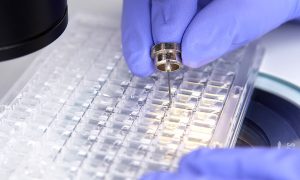
While global research on coronaviruses has shed light on the function of many SARS-CoV-2 proteins, the role of some crucial components remains unknown. Researchers at EMBL Grenoble will use a range of structural biology methods to try to solve some of the puzzles of the molecular mechanics of…
SCIENCE & TECHNOLOGY2020
sciencescience-technology
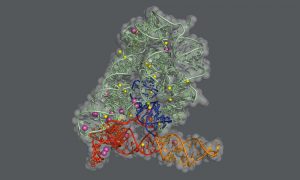
Researchers in the Marcia group at EMBL Grenoble and the De Vivo lab at the Italian Institute of Technology in Genoa have obtained some of the most detailed ever snapshots of the splicing process in systems known as group II self-splicing introns. The new insights will help scientists to develop…
SCIENCE & TECHNOLOGY2020
sciencescience-technology
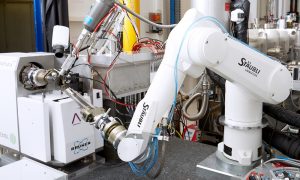
EMBL and the European Synchrotron Radiation Facility (ESRF) restart the activities of the Joint Structural Biology Group in Grenoble to support coronavirus-related projects. A new initiative will allow users to be granted access to the High-Throughput Crystallisation (HTX) lab at EMBL and to a…
CONNECTIONS2020
connectionsscience
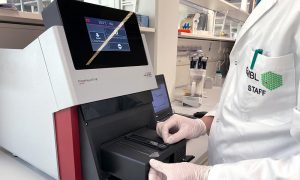
The Sample Preparation and Characterisation Facility (SPC) at EMBL Hamburg reopens to support scientists working on Covid-19 research. The SPC Facility is one of the best equipped facilities in Europe is therefore in high demand from external users. Re-opening the facility also allows experts at…
SCIENCE & TECHNOLOGY2020
sciencescience-technology
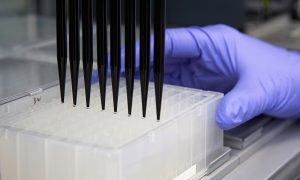
By re-opening the High-Throughput Crystallisation (HTX) lab at EMBL Grenoble, EMBL is supporting structural biology projects to respond to the health threats posed by coronaviruses.
SCIENCE & TECHNOLOGY2020
sciencescience-technology
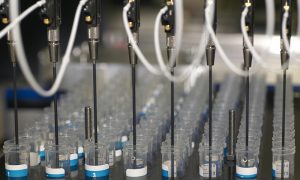
The Marquez Team has restarted operations at the High-Throughput Crystallisation (HTX) lab at EMBL Grenoble. The team has developed a fully automated protein-to-structure pipeline, which can be operated remotely and provides virtual access to the facilities.
SCIENCE & TECHNOLOGY2020
sciencescience-technology
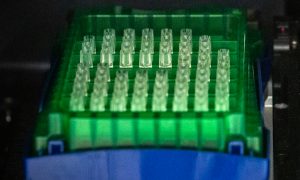
Scientists at EMBL Hamburg and Karolinska Institutet Stockholm aim to find synthetic antibodies – known as nanobodies – that bind a surface protein of the novel SARS-CoV-2 coronavirus. Nanobodies could prevent the virus from entering human cells and causing COVID-19.
SCIENCE & TECHNOLOGY2020
sciencescience-technology
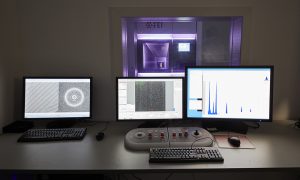
EMBL Heidelberg reopens the Cryo-Electron Microscopy Service Platform to support coronavirus structural biology research.
CONNECTIONS2020
connectionsscience
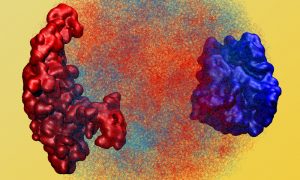
EMBL researchers in the Heard group at EMBL Heidelberg explore the interaction between DNA organisation and gene expression in the early embryo
SCIENCE & TECHNOLOGY2020
sciencescience-technology
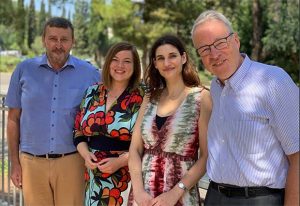
Strengthening ties between EMBL and Israel through the Scientific Visitor Programme
PEOPLE & PERSPECTIVES2020
people-perspectivesscience
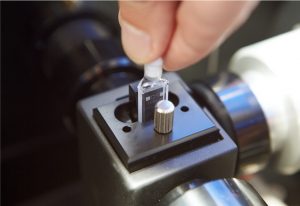
EU funding for iNEXT-Discovery consortium unlocks key technologies for structural biology
EMBL ANNOUNCEMENTSLAB MATTERS2019
embl-announcementslab-matters
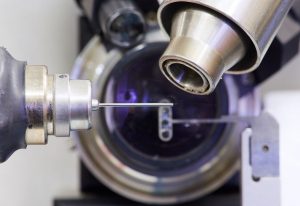
EMBL is now a member of the Instruct-ERIC organisation
LAB MATTERS2019
announcementslab-matters
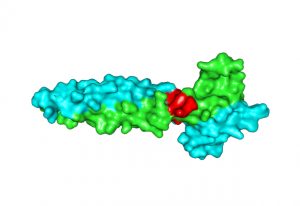
A new paper describes a unique mechanism of partner selectivity in transcription factors.
SCIENCE & TECHNOLOGY2019
sciencescience-technology
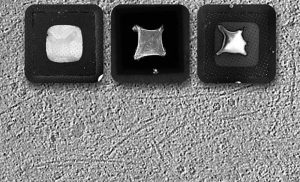
A new technique in cryo-EM
SCIENCE & TECHNOLOGY2019
sciencescience-technology
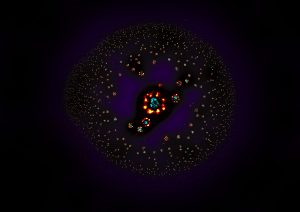
EMBL researchers have published two new studies involving the nuclear pore complex
SCIENCE & TECHNOLOGY2019
sciencescience-technology

From 27–30 September, Tara will be docked in the port of Marseille, France’s second largest city.
EMBL ANNOUNCEMENTS2019
embl-announcementsevents
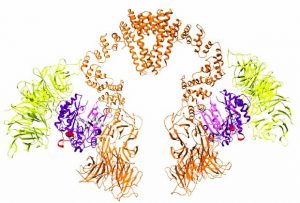
Using cryo-EM, scientists have determined the structure of a large protein complex called Elongator.
SCIENCE & TECHNOLOGY2019
sciencescience-technology

EMBL Hamburg and Tara raise awareness of the risks of microplastic pollution and global infection
EMBL ANNOUNCEMENTS2019
embl-announcementsevents
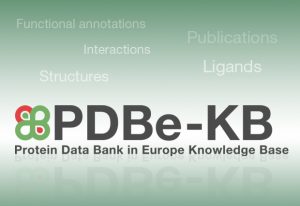
PDBe-KB - new data resource for protein structure and function launches
LAB MATTERS2019
lab-matters

New group leader at EMBL Grenoble is investigating the cellular role of melanoma antigens
SCIENCE & TECHNOLOGY2019
sciencescience-technology

Scientists honoured for contributions in cancer immunotherapy and structural biology
PEOPLE & PERSPECTIVES2019
alumnipeople-perspectives
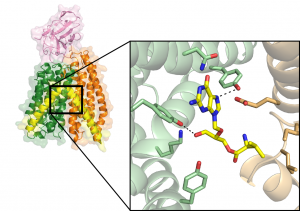
Scientists develop structural model that could help in the development of drugs with increased absorption rates
SCIENCE & TECHNOLOGY2019
sciencescience-technology

A collection of the most read articles from the EMBL news website in 2018
LAB MATTERS2019
lab-matters
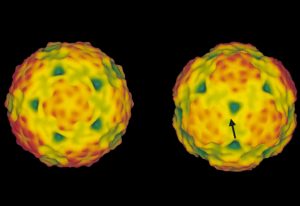
What does it take to create a vaccine or improve cancer therapies?
LAB MATTERSSCIENCE & TECHNOLOGY2018
lab-mattersscience-technology
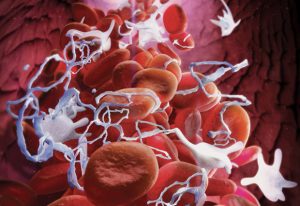
EMBL scientists investigate the structure of a key protein involved in blood clotting
SCIENCE & TECHNOLOGY2018
sciencescience-technology
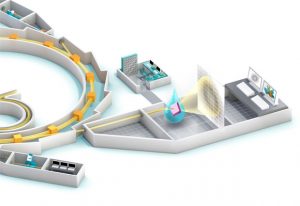
Speeding up time-resolved X-ray crystallography with EMBL beamline P14
SCIENCE & TECHNOLOGY2018
sciencescience-technology
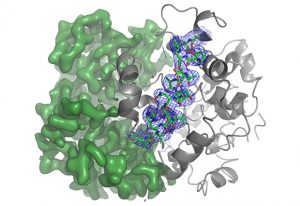
Researchers at EMBL Hamburg have released the next generation of their ARP/wARP software
LAB MATTERSSCIENCE & TECHNOLOGY2018
lab-mattersscience-technology
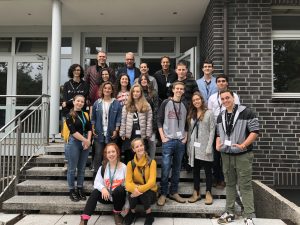
17 young scientists experienced hands-on training at EMBL Hamburg.
CONNECTIONS2018
connectionsevents
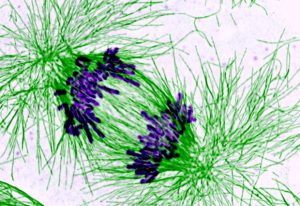
EMBL scientists discover how a component of the cohesin ring binds DNA
SCIENCE & TECHNOLOGY2018
sciencescience-technology

Discover how EMBLers across all sites share their passion for science
LAB MATTERSPEOPLE & PERSPECTIVES2018
lab-matterspeople-perspectives

The Protein Data Bank in Europe celebrates its schools art project with its largest exhibition yet
LAB MATTERS2018
lab-mattersscience
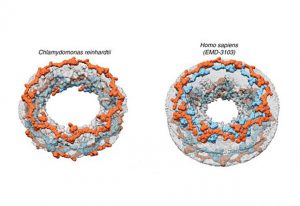
EMBL scientists reveal NPC architecture of algae
SCIENCE & TECHNOLOGY2018
sciencescience-technology
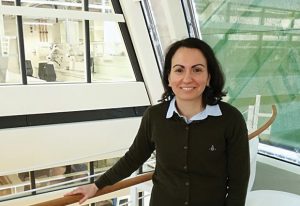
The new head of facility at EMBL Hamburg will help users solve protein puzzles
PEOPLE & PERSPECTIVES2018
people-perspectivesscience
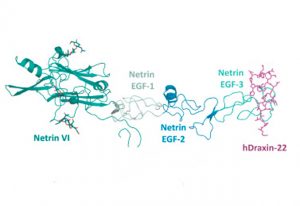
EMBL scientists discover how two guidance cues work together when neurons project axons across the midline
SCIENCE & TECHNOLOGY2018
sciencescience-technology
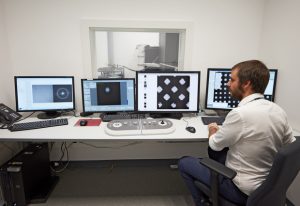
Access to state-of-the-art microscopes and outstanding expertise
SCIENCE & TECHNOLOGY2018
sciencescience-technology
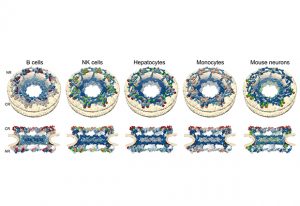
EMBL scientists create a turnover catalogue of almost 10.000 proteins from primary cells
SCIENCE & TECHNOLOGY2018
sciencescience-technology
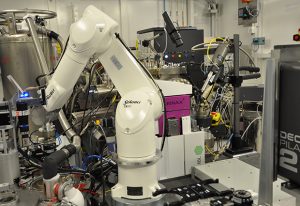
EMBL instrumentation teams adapting tech to run biological experiments on the synchrotron after its upgrade
LAB MATTERSSCIENCE & TECHNOLOGY2018
lab-mattersscience-technology
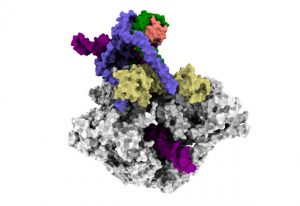
EMBL researchers uncover how a key enzyme that helps cells make new proteins starts its work
SCIENCE & TECHNOLOGY2018
sciencescience-technology
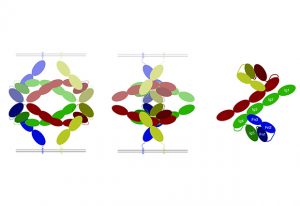
EMBL researchers solve a decades-long debate on a key process for brain and embryo-development
SCIENCE & TECHNOLOGY2018
sciencescience-technology
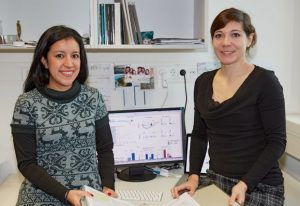
EMBL scientists unveil how 3D chromatin structure affects RNA splicing
SCIENCE & TECHNOLOGY2017
sciencescience-technology
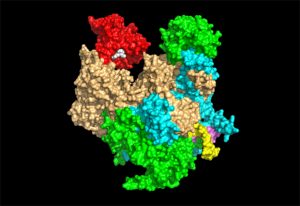
ERC grantee Stephen Cusack shares his vision for the next ten years
SCIENCE & TECHNOLOGY2017
sciencescience-technology
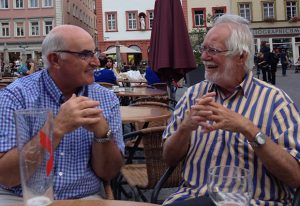
How a research technician with a master’s degree contributed to Nobel Prize-winning work
PEOPLE & PERSPECTIVES2017
alumnipeople-perspectives
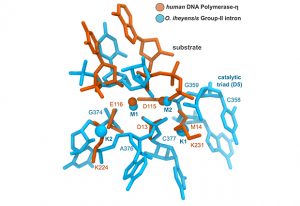
EMBL scientists superimpose structures of two-metal-ion enzymes and reveal new potential drug targets
SCIENCE & TECHNOLOGY2017
sciencescience-technology

New group leader based in Grenoble aims to unveil the mechanisms of RNA editing
PEOPLE & PERSPECTIVES2017
people-perspectivesscience
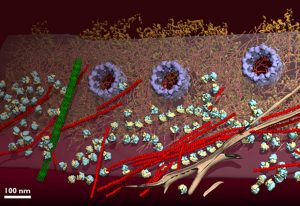
The Mahamid group studies meso-scale molecular assemblies in intact cells and model organisms at molecular resolution
PEOPLE & PERSPECTIVES2017
people-perspectivesscience

20,000 visitors get sneak peek at giant particle accelerators at DESY DAY in Hamburg
LAB MATTERS2017
eventslab-matters

Jacques Dubochet, Nobel laureate and former EMBL group leader, reflects on a key aha moment
PEOPLE & PERSPECTIVES2017
alumnipeople-perspectives
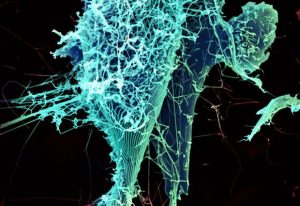
EMBL researchers create highest resolution 3D model of important structure within Ebola virus
SCIENCE & TECHNOLOGY2017
sciencescience-technology
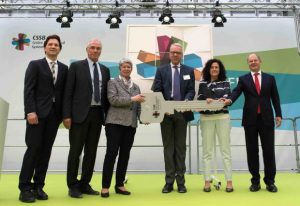
Inside the Centre for Structural Systems Biology
SCIENCE & TECHNOLOGY2017
sciencescience-technology
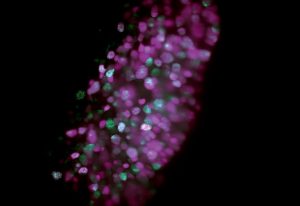
A summary of recent research highlights from EMBL
SCIENCE & TECHNOLOGY2017
sciencescience-technology
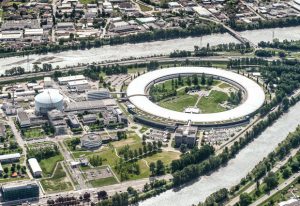
EMBL and the European synchrotron ESRF extend their Joint Structural Biology Group
CONNECTIONSLAB MATTERS2017
connectionslab-matters
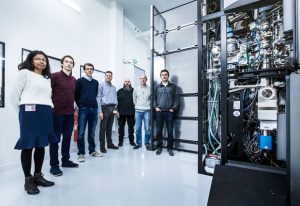
As a new cryo-EM facility is inaugurated, EMBL’s Michael Hons describes his role in the project
SCIENCE & TECHNOLOGY2017
sciencescience-technology

Alumnus Michael Parker talks about his career, research highlights and how EMBL has played a role
PEOPLE & PERSPECTIVES2017
alumnipeople-perspectives
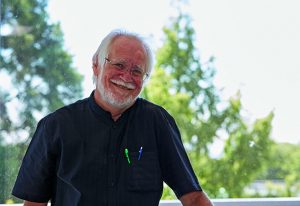
EMBL alumnus recognised for cryo-electron microscopy work
EMBL ANNOUNCEMENTS2017
embl-announcementsscience
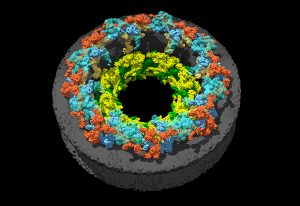
EMBL’s new group leader based in Hamburg aims to create models of infection cycles
PEOPLE & PERSPECTIVES2017
people-perspectivesscience
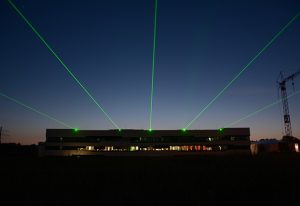
Newly opened European X-Ray Free-Electron Laser celebrates start of user operations
CONNECTIONS2017
connectionsscience

Lars Steinmetz. Director of the Life Science Alliance, reflects on the EMBL|Stanford initiative
CONNECTIONS2017
connectionsevents
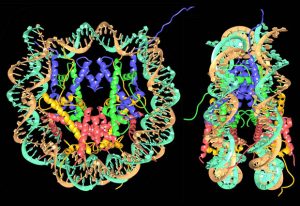
Tim Richmond looks back on the work that revealed the high-resolution structure of the nucleosome
SCIENCE & TECHNOLOGY2017
eventsscience-technology
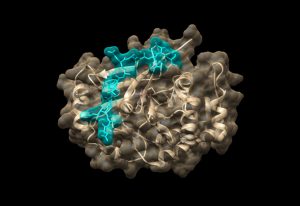
ERC grantee Maja Köhn shares her vision for the next ten years
SCIENCE & TECHNOLOGY2017
sciencescience-technology
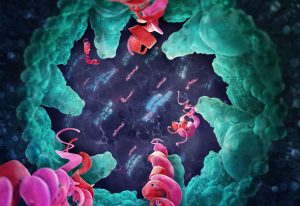
EMBL scientists add crucial knowledge to understanding of the bacterium that causes tuberculosis
SCIENCE & TECHNOLOGY2017
sciencescience-technology
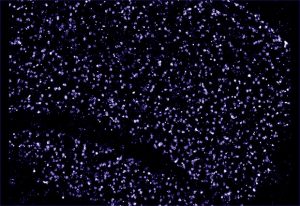
ERC grantee Edward Lemke shares his vision for the next ten years
SCIENCE & TECHNOLOGY2017
sciencescience-technology
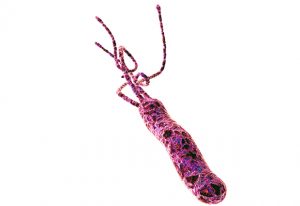
Keeping bacterial chromosomes tangled could lead to new approaches to treatment
SCIENCE & TECHNOLOGY2017
sciencescience-technology

EMBL alumna Zehra Sayers key driver of the Middle East’s first synchrotron project
PEOPLE & PERSPECTIVES2017
alumnipeople-perspectives

New group leader Wojciech Galej investigates RNA-protein complexes involved in gene expression
PEOPLE & PERSPECTIVES2017
people-perspectivesscience
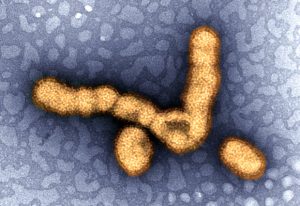
Understanding how the flu virus steals host RNA offers hope of new drugs
SCIENCE & TECHNOLOGY2016
sciencescience-technology
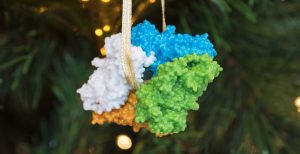
Ewan Birney's nine "Structures of Christmas" celebrate 20 years of PDBe
LAB MATTERSSCIENCE & TECHNOLOGY2016
lab-mattersscience-technology
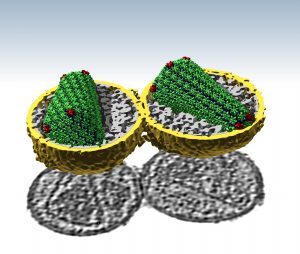
EMBL scientists use new techniques to describe the architecture of conical HIV capsids
SCIENCE & TECHNOLOGY2016
sciencescience-technology
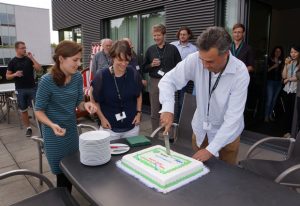
The PEPC course celebrated its 10th anniversary in Hamburg from the 12 – 20 September this year
CONNECTIONS2016
connectionsevents

How Christian Löw’s failed experiment led to an unexpected scientific journey
SCIENCE & TECHNOLOGY2016
sciencescience-technology
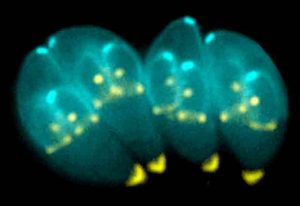
Parasite’s method of rewiring our immune response leads to novel tool for drug tests
SCIENCE & TECHNOLOGY2016
sciencescience-technology
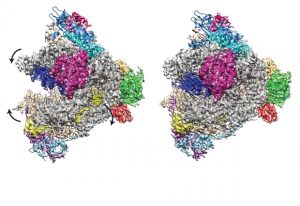
Cryo EM reconstruction of RNA Polymerase I reveals details of how molecule binds and transcribes DNA
SCIENCE & TECHNOLOGY2016
sciencescience-technology
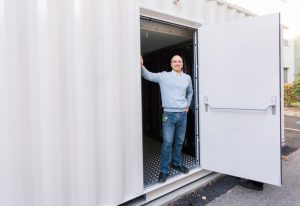
Upgraded server room is ready to take the heat at EMBL Grenoble
LAB MATTERS2016
lab-matters
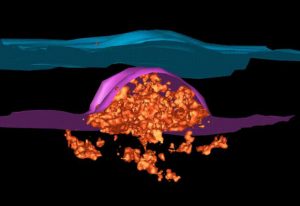
Puzzle of nuclear pore formation in growing nuclei solved
SCIENCE & TECHNOLOGY2016
sciencescience-technology
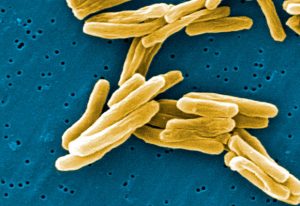
EMBL researchers help to design a lead compound active against four different pathogens
SCIENCE & TECHNOLOGY2016
sciencescience-technology
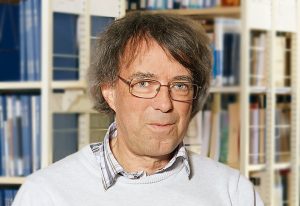
Stephen Cusack looks back on the early days of his collaboration with Anacor developing anti-infectives
LAB MATTERSPEOPLE & PERSPECTIVES2016
lab-matterspeople-perspectives
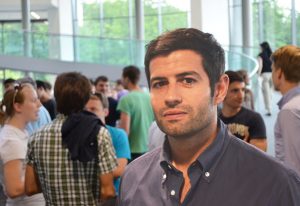
Andrés Palencia on the design of compounds that may help fight drug-resistant TB and more
LAB MATTERSPEOPLE & PERSPECTIVES2016
lab-matterspeople-perspectives

Collaborating to take crystallography into a new time dimension
SCIENCE & TECHNOLOGY2016
sciencescience-technology
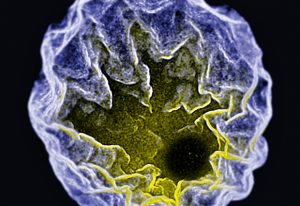
3D printing, gaming, virtual reality and lenticular posters bring new perspectives to research
SCIENCE & TECHNOLOGY2016
sciencescience-technology
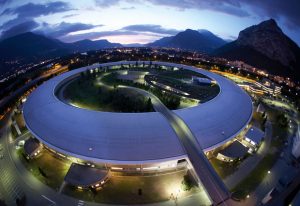
EMBL and ESRF scientists and mechanics work together on upgrade for one of Europe’s big X-ray sources
CONNECTIONS2016
connectionsscience
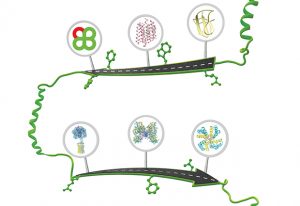
'The PDB plays a crucial role in structural biology research and development'
SCIENCE & TECHNOLOGY2016
sciencescience-technology
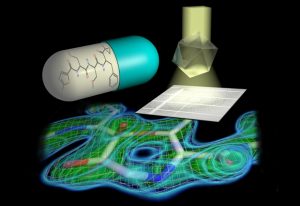
Detailed structure paves the way for more effective cancer therapies
SCIENCE & TECHNOLOGY2016
sciencescience-technology
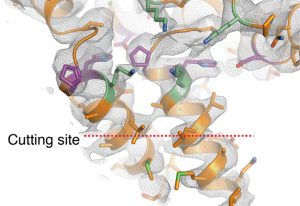
Study provides insights into workings of new HIV drugs and how virus becomes resistant
SCIENCE & TECHNOLOGY2016
sciencescience-technology
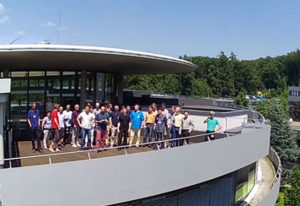
27 former Bork lab members joined Peer for a full-day get-together this summer
LAB MATTERS2016
alumnilab-matters
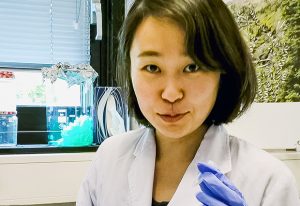
Studying at EMBL in Grenoble helps Japanese postdoc see her native country through different eyes
SCIENCE & TECHNOLOGY2016
sciencescience-technology
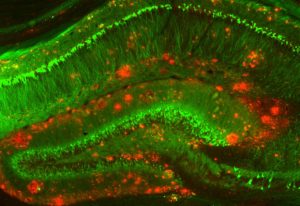
How cells eliminate protein deposits that can lead to neurodegenerative disorders
SCIENCE & TECHNOLOGY2016
sciencescience-technology
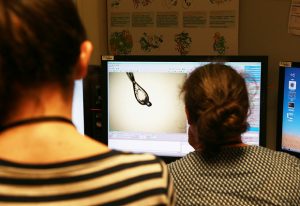
Establishing a programme of research, development and user services for time-resolved crystallography
SCIENCE & TECHNOLOGY2016
sciencescience-technology

Grenoble-based Partnership for Structural Biology (PSB) renewed for five more years
CONNECTIONSLAB MATTERS2016
connectionslab-matters
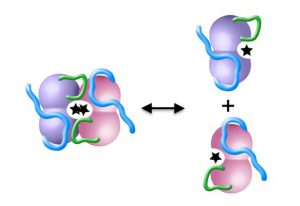
Unexpected results: structure of DAPK enzyme reveals dual-purpose loop
SCIENCE & TECHNOLOGY2016
sciencescience-technology
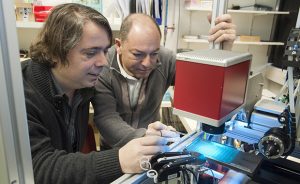
Florent Cipriani talks about his passion for developing beamline instrumentation
SCIENCE & TECHNOLOGY2016
sciencescience-technology
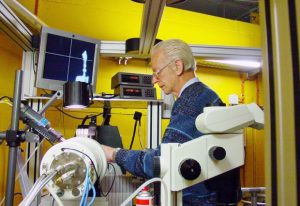
Meet a driving force behind collaborations with the Slovak Republic, alumnus Jozef Ševčik
PEOPLE & PERSPECTIVES2016
alumnipeople-perspectives
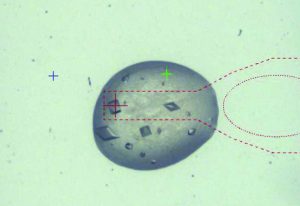
CrystalDirect, developed at EMBL, automates crystal preparation for X-ray analysis
SCIENCE & TECHNOLOGY2016
sciencescience-technology
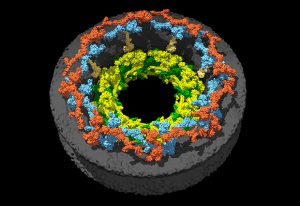
First detailed structural description of all the rings of nuclear pores
SCIENCE & TECHNOLOGY2016
sciencescience-technology
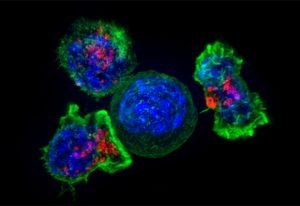
Information on structure of molecule used for genome engineering yields increased efficiency
SCIENCE & TECHNOLOGY2016
sciencescience-technology
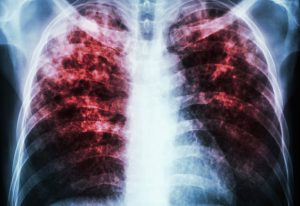
How an EMBL team is making and sharing tools to explore tuberculosis protein structures
SCIENCE & TECHNOLOGY2016
sciencescience-technology
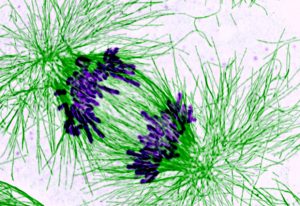
Structural insights into how cohesin keeps DNA together during the cell cycle
SCIENCE & TECHNOLOGY2016
sciencescience-technology
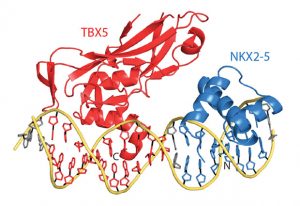
How transcription factors interact to create a heart
SCIENCE & TECHNOLOGY2016
sciencescience-technology
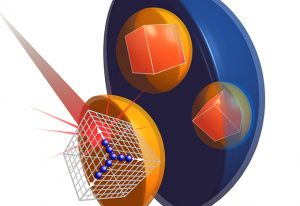
Hamburg collaborators analyse protein crystals inside the cells that made them.
SCIENCE & TECHNOLOGY2016
sciencescience-technology
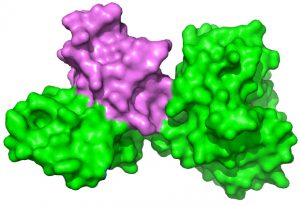
Further insights into how viral enzymes degrade the cell walls of Clostridia bacteria.
SCIENCE & TECHNOLOGY2016
sciencescience-technology
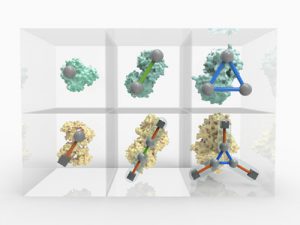
Making it easier to visualise, understand and predict how proteins combine to drive biological processes.
SCIENCE & TECHNOLOGY2015
sciencescience-technology
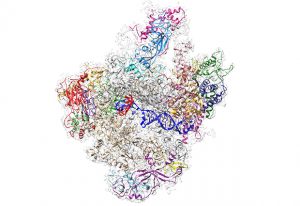
CryoEM solves 3D atomic structure of largest and most elusive RNA polymerase.
SCIENCE & TECHNOLOGY2015
sciencescience-technology
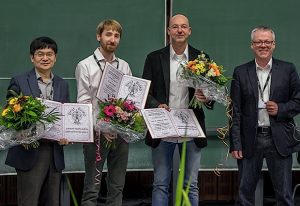
EMBL scientists regularly receive prestigious awards – meet the latest honourees.
EMBL ANNOUNCEMENTSLAB MATTERS2015
embl-announcementslab-matters
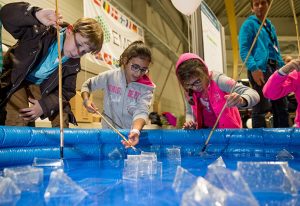
Energy, enthusiasm and endurance on tap as thousands attend 12-hour Hamburg Night of Science.
LAB MATTERS2015
eventslab-matters
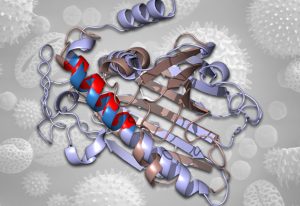
Findings help demonstrate the evolutionary basis for allergy.
SCIENCE & TECHNOLOGY2015
sciencescience-technology
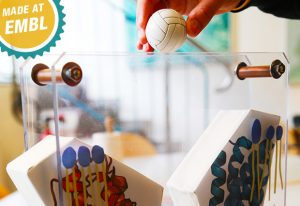
Hamburg researchers have a ball creating game to explain transporter protein mechanism.
LAB MATTERS2015
lab-matters

A nuclear pore riddle: how can you use the same number of pieces to form two rings that fit inside each other?
SCIENCE & TECHNOLOGY2015
sciencescience-technology
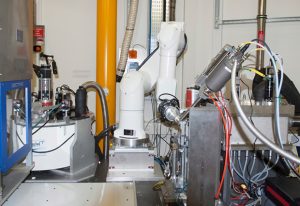
MASSIF-1 processes its 10,000th crystal, less than one year after the beamline became operational.
SCIENCE & TECHNOLOGY2015
sciencescience-technology
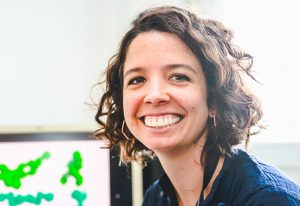
Introducing the Small Angle Scattering Biological Data Bank, developed at EMBL Hamburg.
LAB MATTERSSCIENCE & TECHNOLOGY2015
lab-mattersscience-technology
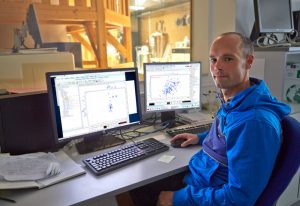
“A structure alone is not so interesting, you need the biology too,” says new NMR-focused group leader
LAB MATTERSPEOPLE & PERSPECTIVES2015
lab-matterspeople-perspectives
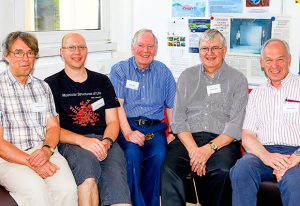
Andrew Miller, first head of EMBL Grenoble, reflects on four decades at the Outstation.
PEOPLE & PERSPECTIVES2015
alumnipeople-perspectives

EMBL scientists regularly receive prestigious awards – meet the latest honourees.
EMBL ANNOUNCEMENTSLAB MATTERS2015
embl-announcementslab-matters
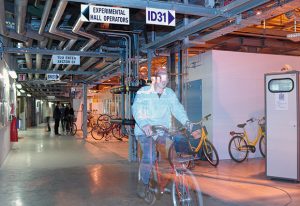
Alumni Reuben Leberman, Jeremy Smith, Elena Seiradake, and Winfried Weissenhorn share their stories.
PEOPLE & PERSPECTIVES2015
alumnipeople-perspectives
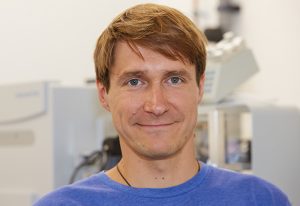
A mathematician who got ‘sucked in’ to biological problems, meet new team leader Theodore Alexandrov.
PEOPLE & PERSPECTIVES2015
people-perspectivesscience
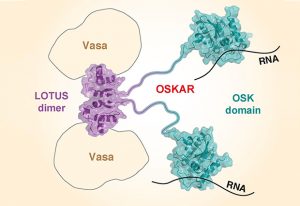
3D structure of Oskar protein gives first molecular insight into how it functions.
SCIENCE & TECHNOLOGY2015
sciencescience-technology
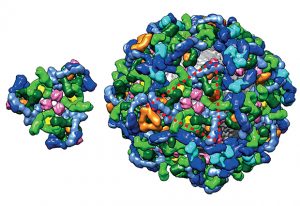
3D imaging unravels COPI coat of cells' transport vesicles.
SCIENCE & TECHNOLOGY2015
sciencescience-technology
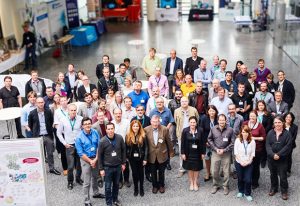
Industrial partners and BioStruct-X facility members gather for Workshop at EMBL Hamburg.
CONNECTIONS2015
connectionsevents

A puzzling peculiarity resolved by Hamburg’s Sample Preparation and Characterisation facility.
SCIENCE & TECHNOLOGY2015
sciencescience-technology
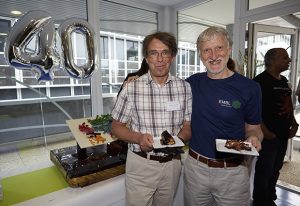
Staff, alumni, partners and more meet at EMBL Grenoble to celebrate Outstation's 40th anniversary.
LAB MATTERS2015
eventslab-matters
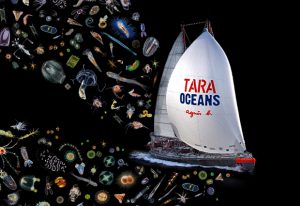
Tara Oceans results reveal climate change insights, and a treasure trove of novel species and genes.
SCIENCE & TECHNOLOGY2015
sciencescience-technology
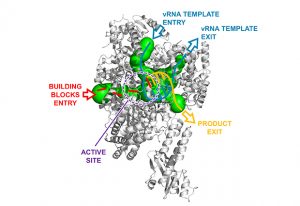
Detailed structural study shows distantly related viruses share a common machinery for replication.
SCIENCE & TECHNOLOGY2015
sciencescience-technology
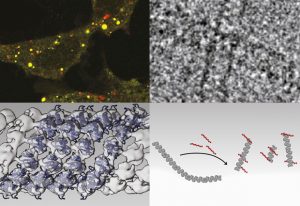
Unveiling the shape of... the 'molecular bin man' – cryoEM helps reveals p62 polymer in 3D.
SCIENCE & TECHNOLOGY2015
sciencescience-technology

Stephen Cusack, head of EMBL Grenoble, among 47 new Royal Society fellows.
LAB MATTERS2015
lab-matters

In their quest to make structural biology more accessible, PDBe launches a new website.
LAB MATTERS2015
lab-matters
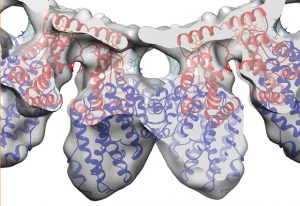
Ground-breaking microscopy technique gives unprecedented insight into endocytosis.
SCIENCE & TECHNOLOGY2015
sciencescience-technology
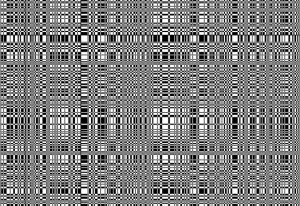
Coin toss inspires CorMap: a new statistical test that sidesteps need for error estimation.
SCIENCE & TECHNOLOGY2015
sciencescience-technology

EMBL Grenoble celebrates 40 years with a symposium for staff, alumni and facility users on 4–5 June.
LAB MATTERS2015
alumnilab-matters
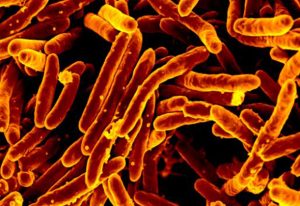
Hamburg-led tuberculosis study demonstrates the power of collaboration.
SCIENCE & TECHNOLOGY2015
sciencescience-technology
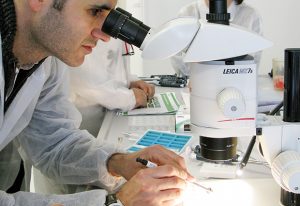
First LearningLAB of 2015 makes science of protein structure crystal clear for 22 teachers.
LAB MATTERS2015
eventslab-matters
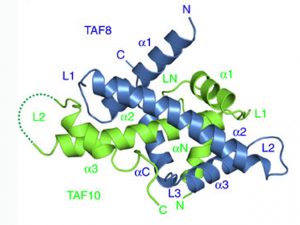
First experimental proof that a key cellular machine forms by uniting pre-assembled modules.
SCIENCE & TECHNOLOGY2015
sciencescience-technology

As EMBL Hamburg celebrates 40 years, we explore the past, present and future of crystallography.
SCIENCE & TECHNOLOGY2015
sciencescience-technology
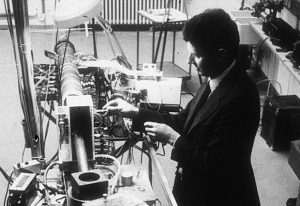
Ken Holmes, one of the visionaries behind EMBL and EMBL Hamburg, looks back to where it all began.
LAB MATTERS2015
alumnilab-matters
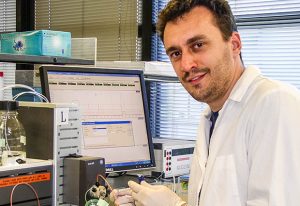
New group leader Marco Marcia aims to broaden horizons while mapping molecules.
SCIENCE & TECHNOLOGY2015
sciencescience-technology
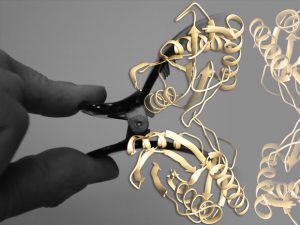
Research led by Teichmann group identifies fundamental mechanism for controlling protein function.
SCIENCE & TECHNOLOGY2015
sciencescience-technology
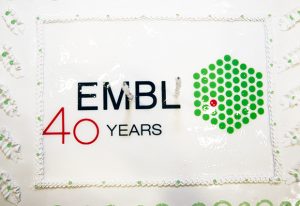
EMBL Hamburg celebrates four decades of vision, pioneering research and beamline services.
CONNECTIONS2014
connectionsevents
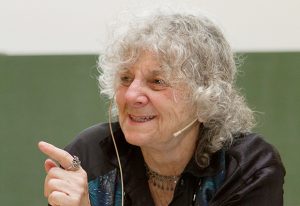
The day EMBL Hamburg predocs and postdocs invited Nobel Prize Winner Ada Yonath to dinner.
LAB MATTERS2014
lab-matters

Employee number 47 retires, leaving behind a legacy that intricately linked her life with EMBL.
LAB MATTERS2014
alumnilab-matters
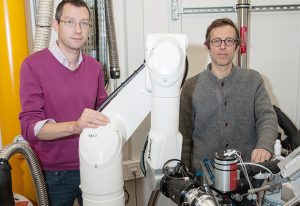
In two months, 2.3 million diffraction images collected on new, fully automated ESRF/EMBL beamline.
SCIENCE & TECHNOLOGY2014
sciencescience-technology
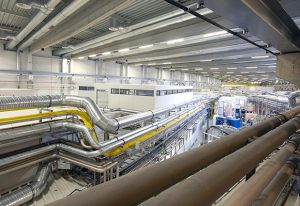
Life Science Nord event reveals how pharmaceutical companies use synchrotrons for their research.
SCIENCE & TECHNOLOGY2014
eventsscience-technology

First complete picture of flu virus polymerase. A story of two decades of blood, sweat and sneezes.
SCIENCE & TECHNOLOGY2014
sciencescience-technology
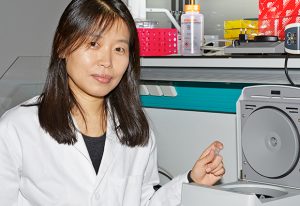
The important thing is forming good biological questions, says new group leader in Genome Biology.
PEOPLE & PERSPECTIVES2014
people-perspectivesscience
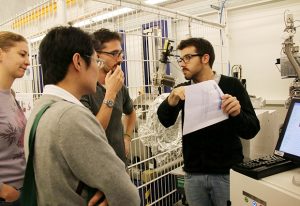
Course attendees go hunting (protein) aliens in a quest for optimal SAXS data.
SCIENCE & TECHNOLOGY2014
eventsscience-technology
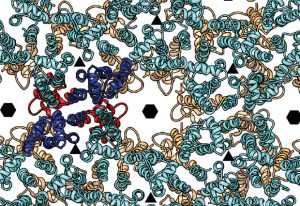
Unprecedented detail on HIV structure continues virus’ string of surprises.
SCIENCE & TECHNOLOGY2014
sciencescience-technology
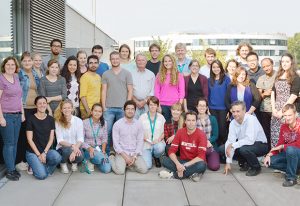
How to make good quality samples for good quality structural biology experiments.
SCIENCE & TECHNOLOGY2014
eventsscience-technology

How Nobel-winning work by alumnus Stefan Hell shapes and inspires current EMBL scientists' research.
SCIENCE & TECHNOLOGY2014
sciencescience-technology
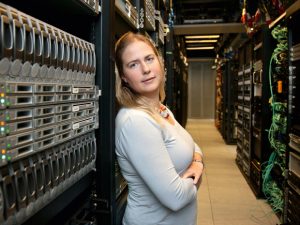
EMBL scientists regularly receive prestigious awards - meet the latest honourees
LAB MATTERS2014
lab-matters

An interview with keynote speaker Michael Rossmann.
LAB MATTERS2014
eventslab-matters
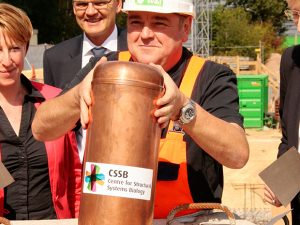
Research building for interdisciplinary Centre for Structural Systems Biology (CSSB) takes shape.
CONNECTIONS2014
connectionsevents
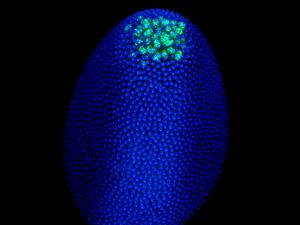
Vasa protein preserves pieces of 'enemy' DNA to help protect the genes of future generations.
SCIENCE & TECHNOLOGY2014
sciencescience-technology
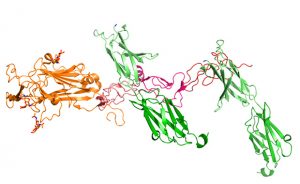
How a single molecule can attract and repel growing brain connections
SCIENCE & TECHNOLOGY2014
sciencescience-technology
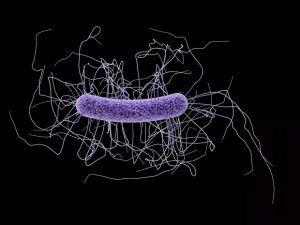
Molecular switch enables viruses to destroy C.diff bacteria – potential alternative to antibiotics
SCIENCE & TECHNOLOGY2014
sciencescience-technology
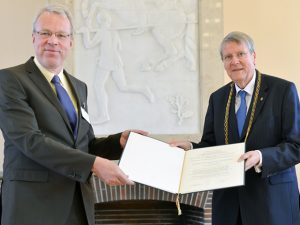
EMBL scientists regularly receive prestigious awards - meet the latest honourees
LAB MATTERS2014
lab-matters
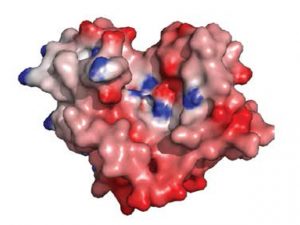
Surprising protein from a flu-like virus is 10 000th ESRF structure
SCIENCE & TECHNOLOGY2014
sciencescience-technology
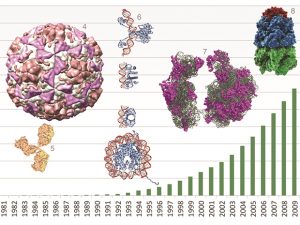
New ways of handling and distributing data at PDBe to tackle ever larger and more complex proteins
SCIENCE & TECHNOLOGY2014
sciencescience-technology

Scientists from EMBL's five sites reflect on the opportunities and challenges that might lie ahead
LAB MATTERS2014
lab-matters
Scientists determine the structure of auxin response factors: daisy-chains that regulate gene expression
SCIENCE & TECHNOLOGY2014
sciencescience-technology
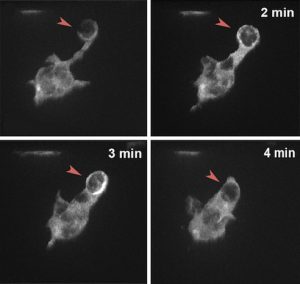
A kaleidoscope of molecules is needed to clean up dead brain cells, and failure can have disastrous consequences
SCIENCE & TECHNOLOGY2014
sciencescience-technology
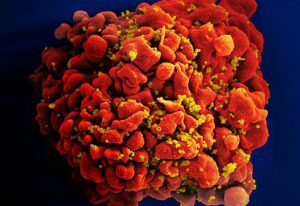
High-resolution structure reveals crucial interactions for HIV maturation
SCIENCE & TECHNOLOGY2014
sciencescience-technology
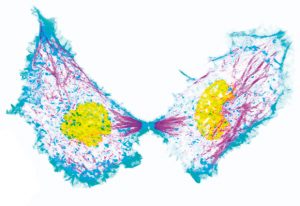
DNA-coralling protein complex in an unexpected bind
SCIENCE & TECHNOLOGY2014
sciencescience-technology
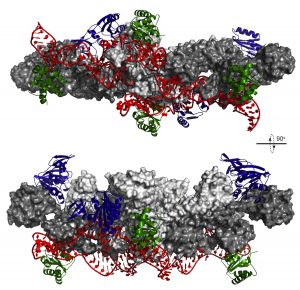
An important step in building ribosomes – the cell’s protein factories – is like a strictly choreographed dance, scientists at the European Molecular Biology Laboratory (EMBL) in Heidelberg, Germany, have discovered. To build these factories, other ‘machines’ inside the cell have to…
SCIENCE & TECHNOLOGY2013
sciencescience-technology
A research team of scientists from EMBL Grenoble and the IGBMC in Strasbourg, France, have, for the first time, described in molecular detail the architecture of the central scaffold of TFIID: the human protein complex essential for transcription from DNA to mRNA. The study, published today…
SCIENCE & TECHNOLOGY2013
sciencescience-technology
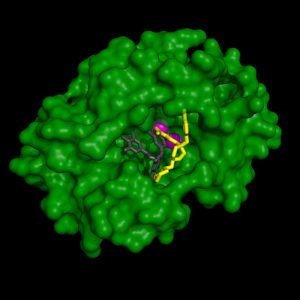
Researchers at the European Molecular Biology Laboratory (EMBL) in Grenoble, France, have determined the detailed 3-dimensional structure of part of the flu virus’ RNA polymerase, an enzyme that is crucial for influenza virus replication. This important finding is published today in PLoS…
SCIENCE & TECHNOLOGY2012
sciencescience-technology
Breakthroughs in biomedical science are a step closer today, with the launch of a new distributed research infrastructure for the science of structural biology: Instruct. The launch of Instruct will give academic and commercial scientists across Europe access to a full portfolio of integrated…
SCIENCE & TECHNOLOGY2012
sciencescience-technology
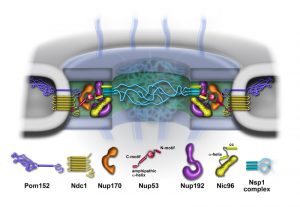
A fungus that lives at extremely high temperatures could help understand structures within our own cells. Scientists at the European Molecular Biology Laboratory (EMBL) and Heidelberg University, both in Heidelberg, Germany, were the first to sequence and analyse the genome of a heat-loving fungus,…
SCIENCE & TECHNOLOGY2011
sciencescience-technology
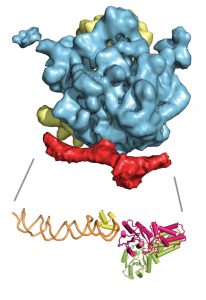
Like an overprotective parent on the first day of school, a targeting factor sometimes needs a little push to let go of its cargo. Scientists at the European Molecular Biology Laboratory (EMBL) in Grenoble, France, have visualised one such hand-over. They were the first to determine the structure…
SCIENCE & TECHNOLOGY2010
sciencescience-technology
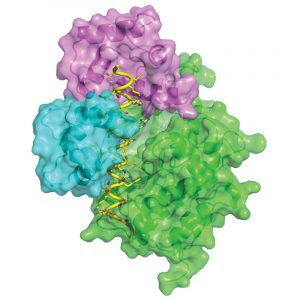
Cells rely on a range of signalling systems to communicate with each other and to control their own internal workings. Scientists from the European Molecular Biology Laboratory (EMBL) in Hamburg, Germany, have now found a way to hack into a vital communications system, raising the possibility of…
SCIENCE & TECHNOLOGY2010
sciencescience-technology
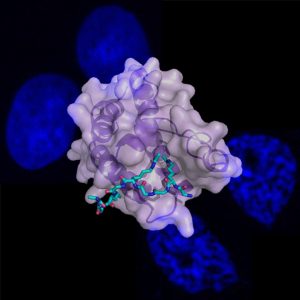
In the quest for speed, olympic swimmers shave themselves or squeeze into high-tech super-suits. In the body, sperm are the only cells that swim and, as speed is crucial to fertility, have developed their own ways to become exceptionally streamlined. Scientists at the European Molecular Biology…
SCIENCE & TECHNOLOGY2009
sciencescience-technology
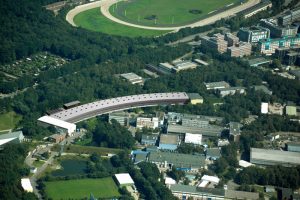
The German Federal Ministry for Education and Research (BMBF) has awarded 8.8 Million Euro to the Hamburg Outstation of the European Molecular Biology Laboratory (EMBL) for the construction of an Integrated Research Facility for Structural Biology at the new PETRA-III storage ring of the German…
LAB MATTERS2007
lab-matters
In the early days of X-ray crystallography obtaining a three-dimensional model of a protein required wire models, screws, bolts and years of tedious calculations by hand. Today macromolecular models are built by computers – thanks to sophisticated software and in particular a package called…
LAB MATTERSSCIENCE & TECHNOLOGY2006
lab-mattersscience-technology
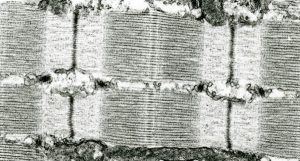
Imagine grabbing two snakes by the tail so that they can’t wriggle off in opposite directions. Scientists at the Hamburg Outstation of the European Molecular Biology Laboratory (EMBL) and collaborators from King’s College in London have now discovered that something similar happens to a…
SCIENCE & TECHNOLOGY2006
sciencescience-technology
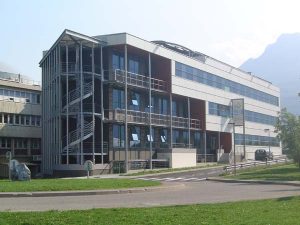
On Friday, 13 January 2006, the new Carl-Ivar Brändén Building (CIBB) will be inaugurated on the Polygone Scientifique Campus in Grenoble, France. The CIBB will be operated as a collaboration between major international and national partners based in Grenoble and is a further step in the…
LAB MATTERS2006
lab-matters
Today the European Molecular Biology Laboratory (EMBL) opens a new highthroughput crystallization facility at its Outstation located on the campus of the German Synchrotron Radiation Facility (DESY) in Hamburg, Germany. The facility, made possible by major funds from the German Ministry for Science…
EMBL ANNOUNCEMENTSLAB MATTERS2005
embl-announcementslab-matters
No results found